Business Can't Ignore These Unavoidable Truths at COP28
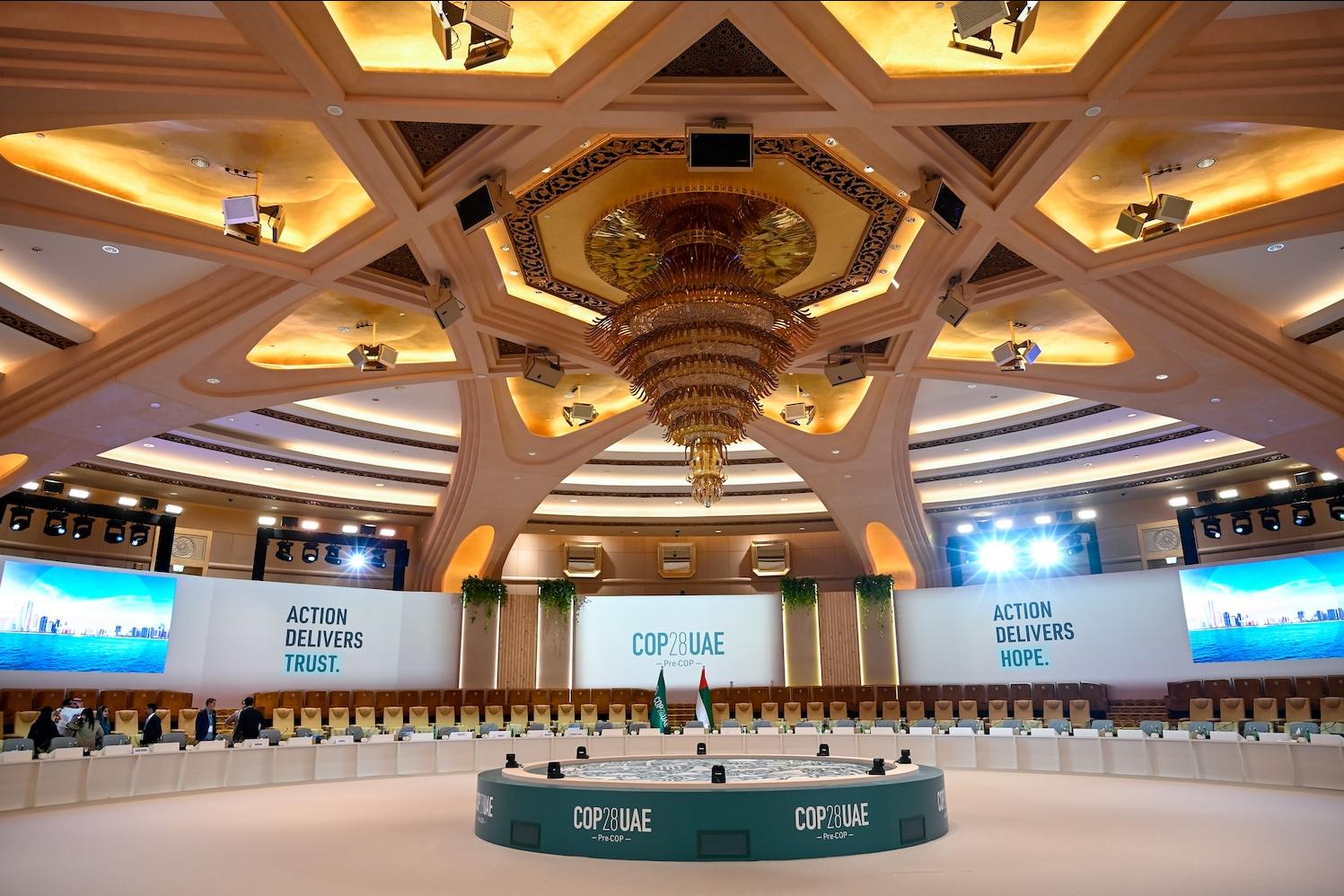

Setup for Pre-COP programming began at the end of October in the United Arab Emirates. (Image: COP28 UAE/Flickr)
Plummeting costs for solar and wind power. Historic government investments in clean energy and climate priorities. A rising tide of corporate leaders eager to help advance solutions and even calling for the phase-out of fossil fuels. These are just a few of the promising signs of progress as representatives begin to arrive in Dubai for COP28, the latest round of global climate negotiations.
And yet, while fresh reasons for optimism abound, we’re still not implementing solutions at the requisite scale or speed to prevent ecological and human catastrophes. The world just endured the hottest summer in 120,000 years, marked by unprecedented wildfires in such far-flung places as Canada and Maui. More recently, the popular tourist destination of Acapulco, Mexico, was devastated by a surprise Category 5 hurricane that spun up in less than 24 hours over unusually warm waters. This is the underlying reality the U.N. reaffirmed when it unveiled the first Global Stocktake report, an essential tool for measuring the world's collective efforts — or lack thereof — against the goals of the Paris Agreement ahead of COP28.
With the stakes continuing to grow and our window of opportunity to avoid the worst effects continuing to shrink, many business leaders want a better understanding of where we stand now, why we continue to fall short of where we need to be, and what we can do to close the gap. In response, I offer two fundamental truths, from which everything else flows.
First, the climate crisis and the nature crisis are inextricably linked and mutually reinforcing. Our warming planet is unraveling ecosystems that sustain all life and undergird all economic activity. And as we lose more of the natural world, we lose critical allies in the fight against climate change. I’m talking about our forests, grasslands and peatlands, and other natural systems that slow warming by absorbing vast amounts of carbon, while also providing key resources that help us adapt to the challenges that a century of human-induced warming has already baked in for life on Earth.
The good news is that companies are waking up to the reality of these twin ecological crises. More than 6,500 companies — including 2,000 small-to-medium enterprises — are setting near-term (e.g. 2030) emissions reduction targets through the Science Based Targets Initiative. Hundreds of others are now setting even more ambitious net-zero targets for 2040 or 2050. And a growing number are taking steps to remove deforestation and other harmful impacts from their product supply chains and even going beyond that to invest in the large-scale conservation and restoration of critical terrestrial, freshwater and marine ecosystems.
Innovation bolsters their efforts. Advances in technology have made wind and solar — which helped the world avert a whopping 600 million tons of carbon emissions in 2022 alone — both affordable and scalable over the last decade, to the point where these so-called “alternative” energy sources are cheaper than gas and coal. Furthermore, research shows that investment in renewables generates three times more jobs than the same investment in the fossil fuel industry. The Clean Energy Buyers’ Alliance, which WWF helped found, reports that more than 70 gigawatts of renewable energy have been contracted by corporations since 2014.
Despite these successes, challenges loom large ahead of COP28. Our current pace in ramping up renewable capacity still lags. We need a two- to three-fold acceleration to achieve our decarbonization goals in time to avoid the worst impacts of climate change. Likewise, nature continues to retreat in the face of expansion for agriculture and development, taking with it the myriad social, economic and cultural benefits that it provides to humanity free of charge.
This brings me to my second truth: The private sector can’t do it alone. We need government action to help create the enabling conditions for change and provide ample financing to support it. Last year’s passage of the Inflation Reduction Act in the United States represented much-needed progress on both of these points. The legislation will direct nearly $369 billion into clean energy and climate-centric initiatives, with the aim of cutting U.S. GHG emissions by 40 percent by 2030.
Government can also establish frameworks for additional climate transparency, a step that 87 percent of Americans support. California’s new Climate Corporate Data Accountability Act, a potential new climate disclosure rule from the U.S. Securities and Exchange Commission, the EU directive on sustainability, and the U.K. directive on climate transition planning are indicative of this expanding frontier. Meanwhile, initiatives like the Taskforce on Nature-Related Financial Disclosures (TNFD) are helping to set a new benchmark for voluntary disclosure on nature impacts.
Business leaders should encourage more government action like this, in the U.S. and on the world stage. The recent and relatively rapid progress toward a global plastics treaty is proof that companies can leverage their collective clout to drive concerted action among the governments of the world. At COP28, and in the months and years that follow it, companies will have another opportunity to push for similar coordination around our global goals for climate and nature.
The Global Stocktake at COP28 once again underscores the need for nations to ramp up their ambitions and match their words with concrete action. It also serves as a reminder that the corporate world has both a stake in and a significant role to play in mitigating climate change and nature loss.
Companies possess the tools, insights and means to drive change. It's about weaving sustainability into the corporate DNA — benefiting the bottom line, uplifting communities, and ensuring a clean, safe and stable future for our planet. The onus now lies with corporate leaders to amplify their efforts, collaborate efficiently and push for a world where sustainable business is simply business as usual.
TriplePundit will be in Dubai reporting from COP28. Sign up for our daily newsletter to follow along with our coverage.
Maximize Your Impact with TriplePundit's GivingTuesday Guide


(Image: Prostock-studio/Adobe Stock)
GivingTuesday started as a social media hashtag back in 2012 and grew into a national movement. Observed each year on the Tuesday after the U.S. Thanksgiving holiday, GivingTuesday aims to channel support to nonprofit organizations in a counter to the hyper-consumerism associated with Black Friday and Cyber Monday.
GivingTuesday is now one of the biggest nonprofit fundraising events of the year, raising $3.1 billion in the U.S. alone in 2022. The support is needed now more than ever, as nonprofits report donations are down this year as inflation leaves many less able to give.
This year, TriplePundit turned to our readers, writers and colleagues to develop our crowdsourced GivingTuesday Guide, with the aim of providing a platform for our community to learn from each other about how best to support the causes we care about. Even if you're not financially able to give this year, volunteering or offering your support on social media can make a world of difference for these nonprofits. Read on for some of your favorites.
CampLauncher
CampLauncher provides free camp scholarships for neurodiverse young people, such as those on the autism spectrum or who have diagnoses like Asperger’s or attention-deficit/hyperactivity disorder (ADHD). "Summer camps are often life changing for any individual, regardless of their social and emotional profile. For neurodiverse children and young adults, camp is uniquely positioned to be a transformative force in their lives," the organization's website reads.
Participating camps include Camp Akeela in Vermont, MGH Aspire in Massachusetts and Talisman Summer Camp in North Carolina. "I have personal experience with Camp Akeela, which changed my son's life and mine," said TriplePundit reader Leslie Ochroch in her nomination of CampLauncher.
Click to donate for GivingTuesday
The Friendly Fridge Foundation
The Friendly Fridge Foundation operates the first community refrigerator in the Bronx, New York. Founded by two friends of TriplePundit writer Tina Casey in 2020, the fridge now brings an average 5,000 to 7,000 pounds of food per week to Bronx residents. The mission? "Normalize reducing environmental waste and harm while also reducing stress of many."
Neighbors can donate their unwanted food, and the nonprofit also partners with more than 25 schools, pantries, community centers, restaurants, catering companies, farms and other organizations, according to its website. Along with a community fridge on the sidewalk in the Bronx, the group's volunteers also serve regular hot meals to their neighbors and give away essentials like children's toys and warm clothes.
"I love this nonprofit because it enlists the whole community as donors, receivers and hosts, and because it preserves the dignity of those in need of food," Casey said. "There is no schedule or waiting in long lines."
Click here to donate for GivingTuesday
Rural Youth Voter Fund
The Rural Youth Voter Fund works to "mobilize young voters in small towns, sparse suburbs and rural areas to power a clean economy," said TriplePundit reader Bill McClain, who is involved with the effort. The Fund supports grassroots community organizations focused on engaging young voters, particularly young voters of color.
Those groups include Get Out The Native Vote — "which provided stipends, materials, and training to Native Alaskan youth organizers who worked in 10 rural Alaskan communities to register their neighbors and turn-out the vote for Mary Peltola," the first Alaska Native member of Congress and first woman to represent Alaska in the House of Representatives, according to the Fund's website.
Click here to donate for GivingTuesday
YMCA
The YMCA focuses on youth development and community enrichment through more than 2,700 local chapters across the U.S. Programming includes sports and athletics, as well as childcare, education, youth leadership, and senior and immigrant services.
"YMCA branches across the United States rely on donations to continue bringing vital services to communities," says Dave Armon, CEO of TriplePundit's parent company, 3BL. "Whenever I travel, I visit local Ys to swim. Invariably, these facilities are welcoming to visitors and patronized by a diverse set of users. Those unable to pay for a YMCA membership are eligible through assistance funds. Whenever I can, I contribute beyond my own membership to ensure others can access learn-to-swim programs and all sorts of other activities from tai chi and dance to basketball and pre-K classes."
Local YMCA chapters consistently receive the highest marks possible from Charity Navigator for transparency, governance and efficient use of funds.
Click to donate to the national chapter or search "YMCA" and your city to find a chapter near you.
Camino
Based in Charlotte, North Carolina, Camino is a faith-based nonprofit that primarily serves Latino communities in the U.S. and around the world. Founder and CEO Rusty Price has helped organize more than $150 million in aid to communities across Cuba, Guatemala, El Salvador and the United States since 2003, according to the organization's website.
Camino also provides vital services in the Charlotte area, including a bilingual health center and bilingual career training and social mobility programs, as well as a community thrift shop and a food pantry that served more than 12,000 people across the city last year.
"Overall, it's a great organization!" said TriplePundit reader Arhys Cruz Mora. "And this Christmas, their goal is to give away over 2,000 gifts at their annual Christmas With Camino gift giveaway."
Click to donate for GivingTuesday
It Takes A Village
It Takes A Village provides free support to new families and postpartum parents in Western Massachusetts. Services include a home visit program for families with new babies, as well as social groups, educational programming and other resources for new parents in the area. The Village Closet in Huntington, Massachusetts, provides free diapers, clothes from newborn to adult, baby supplies, toys, books and other essentials that families need.
Mary Lorbert, a client success manager at 3BL, volunteers with It Takes a Village regularly and serves on its board of directors. "Being a parent is hard work," Lorbert said. "The difference It Takes A Village makes is huge to each individual and family it serves. Most recently, it has held car seat fitting clinics, with new car seats provided and installed by a professional, and winter coats and toy gathering initiatives for the upcoming winter and holiday season."
Other 3BLers who live near the company's offices in Northampton, Massachusetts, including content specialist manager Carreen Cook, also donate to It Takes a Village. Like many smaller, local nonprofits, it is not rated by Charity Navigator, but you can learn more about the organization and its mission here.
Click to donate for GivingTuesday
The Miracle League
The Miracle League believes everyone — regardless of disability — should have the opportunity to play baseball. Founded in Georgia in 2000, the nonprofit now includes more than 350 chapters across the U.S. and Canada, serving over 450,000 children and adults.
TriplePundit writer Megan Amrich, who chronicles her experience parenting a child with disabilities on her blog Joyful, Brave & Awesome, found her family's experience with the Miracle League of Western Massachusetts to be life-changing.
"My son began playing in the league this year, and it has been such a transformative experience not only for him, but for our entire family," Amrich said. "He has the opportunity to learn sportsmanship, get outside, be active, and be a team player while surrounded with other kids who move, communicate, think, and act differently or similarly to him. In addition to the weekly baseball games, there are social events throughout the year. And this fall, the league opened its first Inclusive Playground, which is fully accessible for children like my son who use wheelchairs. I cannot say enough good things about this group!"
Click here to donate to the national chapter or search "Miracle League" and your city to find a chapter near you.
CreatorsCircle
TriplePundit writer Nayelli Gonzalez founded CreatorsCircle to help connect diverse young people to purpose-driven careers. The organization hosts a summer fellowship for young people interested in careers in sustainability and social impact, and it provides online databases of impact stories and other impact-focused youth programs.
"CreatorsCircle is a resource hub that connects diverse youth with opportunities to create a life of purpose and impact," Gonzalez said. "Our programs provide high-school youth from historically marginalized communities with access to free resources — including a searchable online database, workshops and a summer program — to help close the opportunity gap for future generations of impact creators and connect them with avenues to explore purpose-driven careers that will help build a new, regenerative economy that advances transformative systems change for the good of all."
All donations this giving season will be used to support stipends for high-schoolers to attend CreatorsCircle's summer fellowship in 2024.
Click to donate for GivingTuesday
Center for Employment Opportunities
Opportunities are often limited for the more than 650,000 men and women who leave U.S prisons and jails each year after serving their time. People with records are often turned away by employers and locked out of housing. More than half of those leaving incarceration in the U.S. are unemployed a year later, increasing the likelihood they’ll return.
The Center for Employment Opportunities is a U.S. nonprofit on a mission to provide pathways to employment for formerly incarcerated people and reduce the likelihood they'll return to prison. The organization began as a project of the Vera Institute of Justice in the 1970s and branched out on its own in 1996. It now operates in 30 cities across 12 U.S. states and has placed more than 34,000 justice-impacted people into full-time jobs through transitional employment, career coaching and support services, according to its website.
The Center earned the highest possible score on Charity Navigator, and I personally send them a recurring donation every month to support the fantastic work they do for people who deserve a second chance.
Click to donate for GivingTuesday
OpenOceans Global
TriplePundit writer Carl Nettleton is the founder of OpenOceans Global, a nonprofit on a mission to keep plastic waste out of the world's oceans. The group uses crowdsourcing to map plastic pollution on beaches around the world and works with dozens of organizations focused on plastic pollution globally to amplify their work.
"OpenOceans Global brings to light innovations in ocean plastic policy, plastic substitution, waste management, river intervention and many other solutions," Nettleton said. "Your contribution will fund the mapping of plastic-fouled beaches, curate solutions, host a collaborative hub for global experts, and support the award-winning The Transition newsletter, reporting on people and progress in solving the ocean plastic crisis."
Click to donate for GivingTuesday
Juvenile Diabetes Research Foundation
The Juvenile Diabetes Research Foundation works to eradicate type 1 diabetes among young people. TriplePundit writer Ellen Delisio has raised thousands of dollars for the Foundation over the years — and the vast majority of those funds go directly to research. The Foundation channeled $473 million into research for type 1 diabetes therapies in 2022, according to its website, with four stars from Charity Navigator for transparency and efficient use of funds.
"They say they exist to put themselves out of business," Delisio said. "Once a cure is found, their job will be done." The Foundation also supports services for people and families living with the diagnosis and public policy advocacy — including campaigns to lower the cost of insulin in the U.S. and the Children’s Congress, which brings young people to meet with and educate lawmakers around the world about type-1 diabetes.
Click to donate for GivingTuesday
Black and Pink
"Black and Pink is a prison abolition group specifically advocating for the rights of LGBTQIA+ and HIV+ incarcerated people," explained John Arvanitis, director of client success and onboarding at 3BL.
The group has seven chapters across the U.S. that provide transitional housing and wraparound services to LGBTQIA+ and HIV+ people who are justice impacted and advocate locally for policies that are more inclusive of the community. It also advocates for criminal justice reform nationally through its Working Group and leads a national penpal and support program for people in the community who are incarcerated.
Click to donate for GivingTuesday
The Nature Conservancy
The Nature Conservancy is a global environmental organization working in 79 countries around the world. With more than 400 environmental scientists on staff, the Nature Conservancy conducts pivotal research, supports conservation and restoration projects, and advocates for public policies that protect people and the environment.
Content specialist Andrea Voytovich is among the 3BL staffers who give recurring donations to the Conservancy. "I'm an enthusiastic member," Voytovich said. "Through that membership, I'm able to help them effect positive global change for both people and nature. I appreciate their frequent updates on how funds are used in specific ways, as well as the ease with which anyone can learn about the natural world and how to help protect and preserve it through information they provide."
The Conservancy received four stars on Charity Navigator, the highest score possible.
Click to donate for GivingTuesday
Center for Communication
Another favorite of 3BL CEO Dave Armon, the Center for Communication is a New York City-based organization committed to driving representation among creatives. The mission: "promote diversity in media by providing students with the knowledge, skills and connections they need to succeed in the industry."
"Presidents and CEOs of many NYC-based ad and PR agencies, fashion houses, news outlets, video production houses and book publishers participate in CenCom events, which are open to current college students of all ages, as well as recent grads," Armon said.
The organization reaches undergrads, graduate students, and recent grads from more than 200 colleges and universities across the New York area and nationwide. Its program series — including panels and career summits — aims to get more passionate young people into media, particularly those from communities that are historically underrepresented in the field. It is not rated by Charity Navigator but has attracted the attention of partners like Google, Bloomberg Philanthropies and the New York City Department of Cultural Affairs.
Click to donate for GivingTuesday
Able Gamers
Another favorite of 3BLer John Arvanitis, Able Gamers connects people with disabilities with low- to no-cost gaming setups. Nonprofit staff works with people individually through peer counseling to develop a setup that meets their needs. If a certain controller or device is not available with existing gaming technology, they invent it at the AbleGamers Center for Inclusive Play in Kearneysville, West Virginia, a maker space that includes 3D printers, a laser and electronics manufacturing capabilities.
But even if the right hardware is developed, too often gamers with disabilities find the features of the game itself are not accessible. To help, Able Gamers also hosts courses for gaming developers focused on accessible and inclusive game design.
Click to donate for GivingTuesday
Don't forget your local news outlets this GivingTuesday
Local news organizations provide critical services in cities and towns across the U.S. and around the world. They offer a platform for local people and their stories, and in many cases uncover glaring cases of public harm that undoubtedly would have continued if not for their reporting.
But local news is a dying breed. Even in major cities, local newspapers, magazine publishers and broadcasters are being forced to downsize, and the services they provide are at serious risk. As you think about your GivingTuesday donations this year, consider subscribing to or supporting your local news outlets. TriplePundit staffers — including myself, editorial assistant Taylor Haelterman and many of our writers — do the same in an effort to support public information and the people who provide it. 3BLers including client success manager Mike Isopi also choose to donate to public news outlets like the Public Broadcasting Corporation (PBS) to support educational broadcasting.
Fellowship Empowers Young People with the Power of Sustainability Storytelling
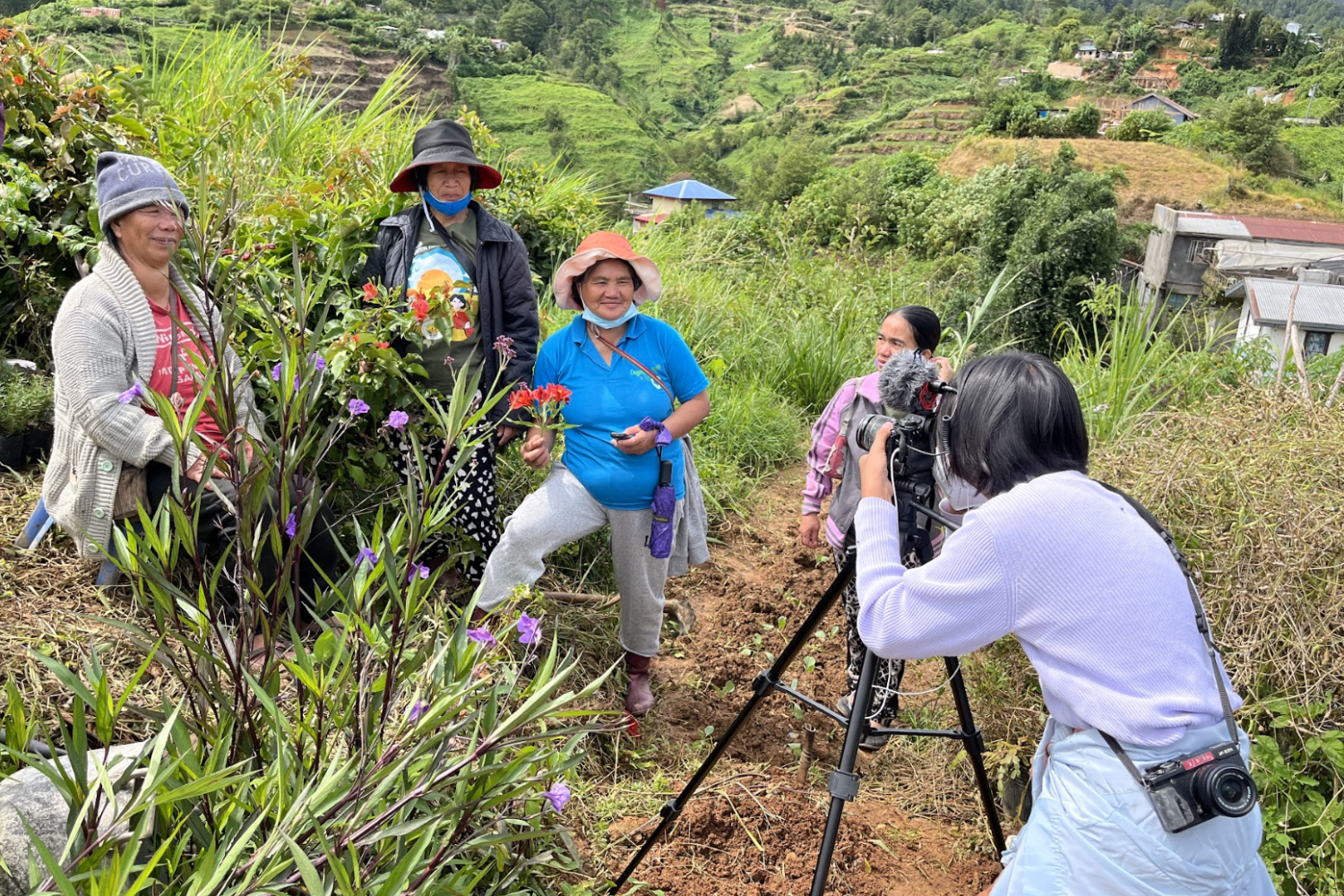

Geela Garcia, multimedia journalist and Girl Rising Future Rising Fellow, Philippines, documents stories of women, food sovereignty and the environment.
Storytelling is central to sustainability and social impact. Issues like warming temperatures or gender equity gaps may sound complex and difficult to understand. But when communicated through the lens of story — and through the eyes of the people and communities affected by these issues and working to solve them — they take on new meaning for engaged audiences.
Young leaders looking to accelerate their work in this area have a new opportunity to learn how to tell impactful stories. Launched by the nonprofit organization Girl Rising, the Future Rising fellowship selects 10 leaders annually between the ages of 17 and 25 who are working on gender equity and climate justice issues interchangeably. The fellowship provides financial support, a stipend of $5,000, access to networks of advisors and experts, and skills training such as leadership development, storytelling workshops, speaking opportunities, and other professional opportunities.
Girl Rising was established to explore how empowering women and girls with education can combat global poverty, CEO Christina Lowry told TriplePundit. Originally, Girl Rising launched as a film, which later became an organization. Along the way, the founding team kept up with research and trends on girls’ education and consistently discovered girls and women are disproportionately impacted by climate change, Lowry said.
Girls and women are more susceptible to climate-induced disasters
Globally, women represent 43 percent of the agricultural workforce, a rate that grows higher in parts of Asia and Africa. As such, women play a critical role in environmental sustainability and food security. Yet due to a combination of factors such as cultural gender norms, lack of access to education and resources, poverty, and limits on decision making, they are disproportionately impacted by climate disasters. Women are also susceptible to climate-induced exploitation such as organized trafficking because climate disasters uproot local security and safety for women and children, according to the United Nations Environment Program.
"We believe, at this moment in time, it is imperative to hand the mics over to girls and young women for us to be able to elevate the voices of those people, young women and young men who really are on the front lines of this work,” Lowry said. “So, we decided to create a fellowship program.”
During their cohort, Future Rising fellows complete a narrative media project that tells the story of their own work or the work of girls and women within the climate and environmental justice space. Fellows also learn the elements of impactful storytelling and are empowered to develop their own stories to tell.
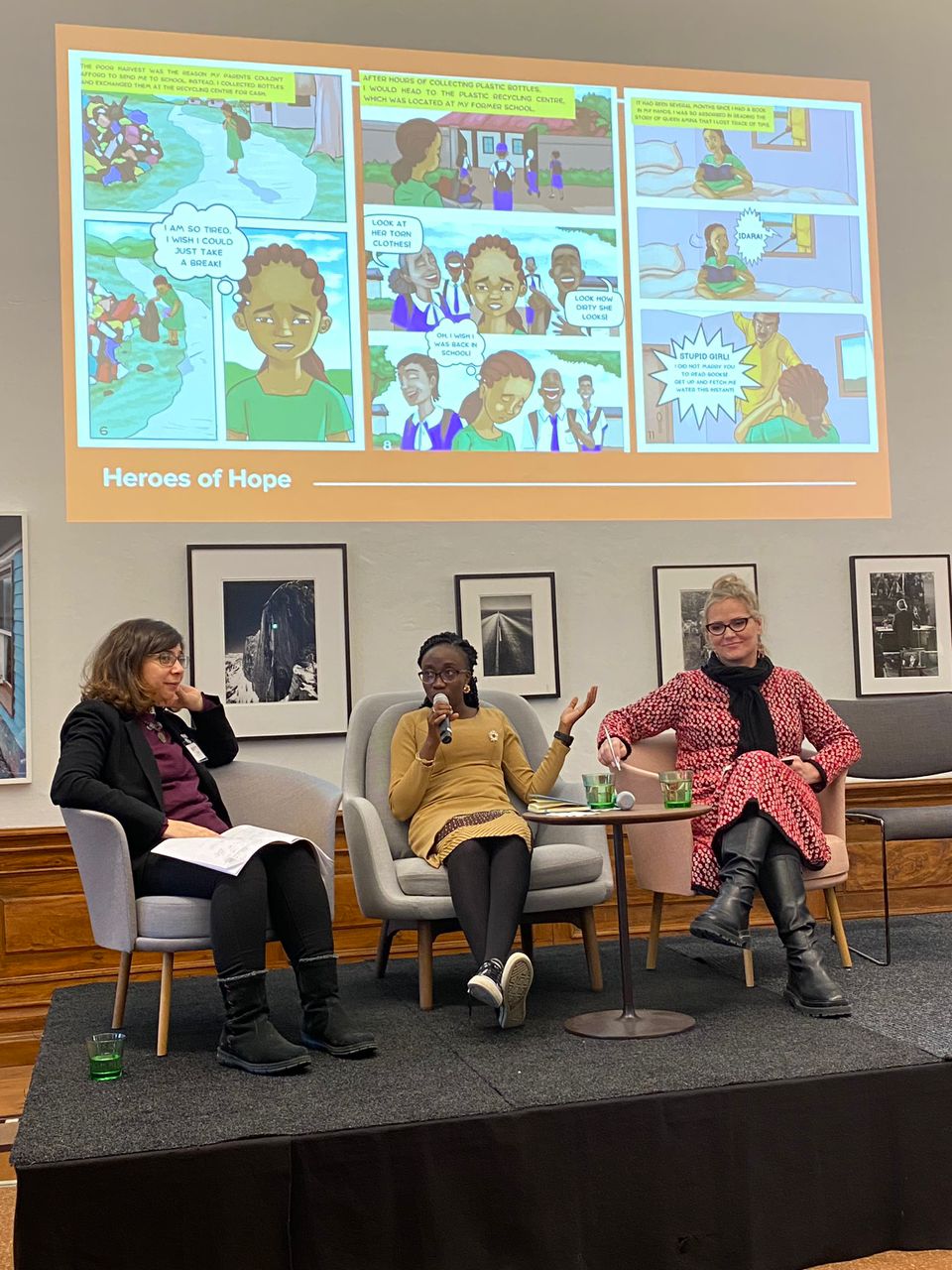
The Future Rising fellowship teaches effective storytelling strategies and provides access to a global network
Ayomide Solanke is a 2021 Future Rising fellow from Lagos, Nigeria. For her media project, she created a graphic novel that highlights how societal practices and norms such as child marriage affect girls and women and worsen poverty and climate change. The novel has since published locally in Lagos as well as online. “[The fellowship] was an opportunity at the time to be able to see and get my message on a larger and … wider platform,” she said.
Solanke first discovered the fellowship via X, previously known as Twitter, and applied. "My original manuscript was probably maybe 10 pages at most,” she told us. “At the end, I have like 45 to 50 pages.”
During the fellowship, Solanke and her cohort participated in a series of training sessions and workshops to learn more about storytelling. She learned to incorporate the voice of survivors in her story by speaking with them, while navigating the delicate line of not making them feel re-victimized. And the time spent drafting her story taught her how important using easy-to-understand language can be to getting a message across.
"I would say that the Future Rising fellowship helped me not just in my project, [but] also in my work as an activist,” Solanke said. “I'm able to have a wider platform to grow and evolve and meet other people and share my work with people, and also hear, and see what other people are doing and incorporate and collaborate.”
Like Solanke, 2022 fellow Geela Garcia of Manila, Philippines, said the fellowship connected her to a global network of individuals to learn from and engage. "I wanted to be in a diverse community with shared goals and perspectives about people and our home,” she told TriplePundit. “Since the cohort is global, it exposes me to stories and experiences of people from different cultures and parts of the world. The fellowship reminds me that despite our differences, we are similar in wanting to make a safer and more livable place for all.”
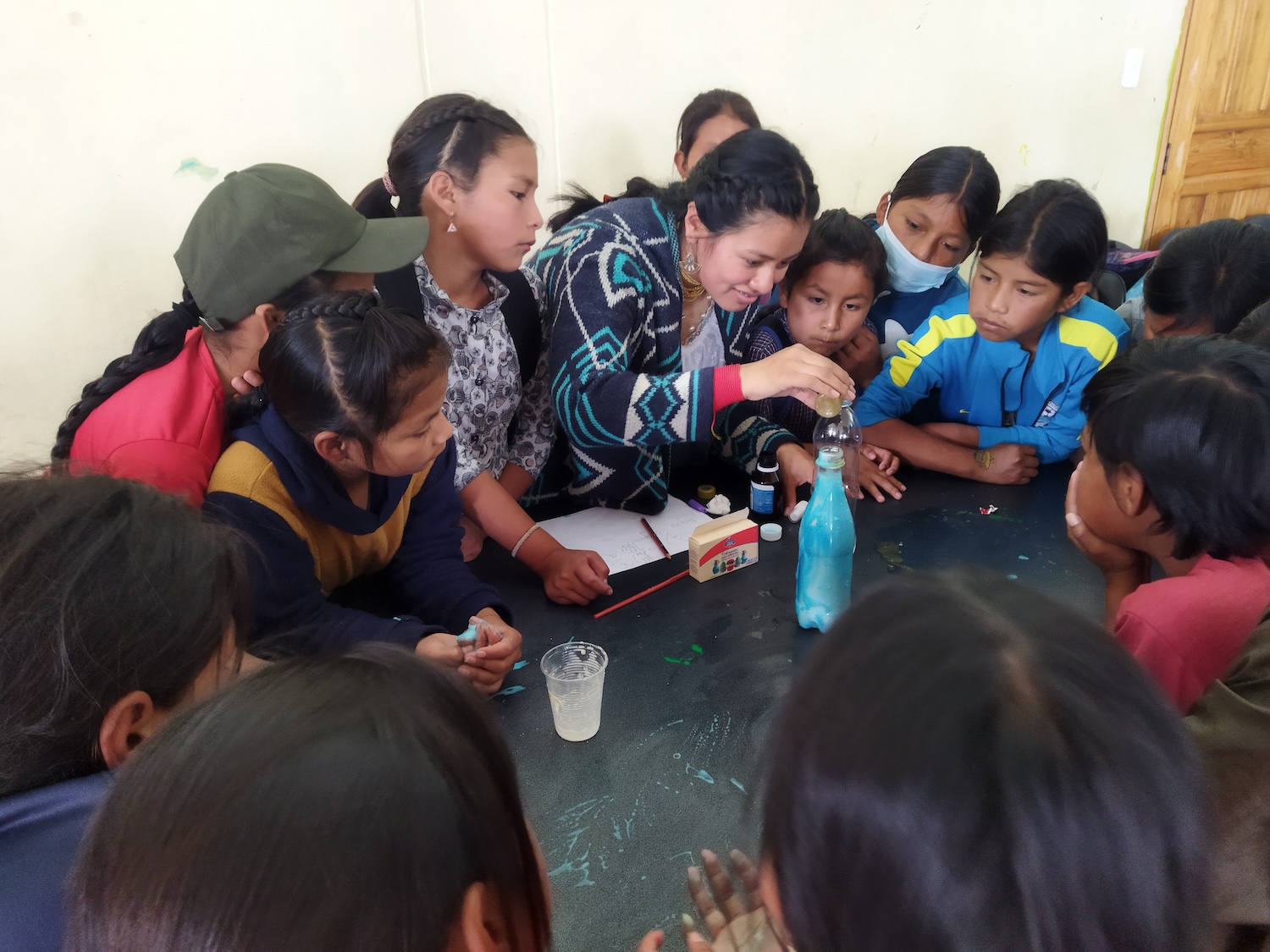
Girl Rising and HP continue their work to advance digital equity and eliminate challenges to girls’ education
Girl Rising has partnered closely with the tech giant HP for nearly a decade — from HP’s support of the original Girl Rising film, to a multi-year partnership to advance technology education in the U.S, India and Nigeria, said Michele Malejki, the company’s global head of social impact.
"In 2021, HP made a commitment to accelerate digital equity for 150 million people, and the Girl Rising Future Fellows program, also launched in 2021, was a natural next step in our collaboration — squarely rooted in our Sustainable Impact focus areas of climate action, human rights and digital equity," Malejki told TriplePundit.
Digital equity — meaning equal access to technology and knowing how to use it — is essential for combating poverty as education, healthcare and economic opportunities increasingly move online. Women and girls, people with disabilities, aging populations, and other marginalized groups are disproportionately affected by gaps in digital literacy and technology access. HP and the HP Foundation aim to change that by bringing technology solutions and funding to nonprofit partners like Girl Rising.
“HP and Girl Rising share a common belief that to drive positive, lasting change in the world, women and girls must have access to quality education, which includes amazing learning materials,” Malejki said. “Educating women and girls is fundamental to addressing our climate crisis, to strengthening our communities and global economy, and to solving other related issues like population growth and human rights violations.” Since 2019, the company and nonprofit have enabled 14.4 million students and teachers in India, Nigeria, and the U.S. with technology solutions and new curriculum, she said.
Meanwhile Girl Rising announced the third cohort of Future Rising Fellows in September in its latest bid to help young people tell their stories on a global platform and have access to power.
“One of the things we know is that young people often don't have a seat at the table, and as critical discussions and decisions are being made about how countries and multilateral institutions are going to address climate change, where investments are going to go, we believe these young people need to be at the table and have their voices heard and their demands heard,” Lowry said.
This article series is sponsored by HP and produced by the TriplePundit editorial team.
Image courtesy of Girl Rising
Millions of Old EV Batteries Could Find a New Home on Solar Farms
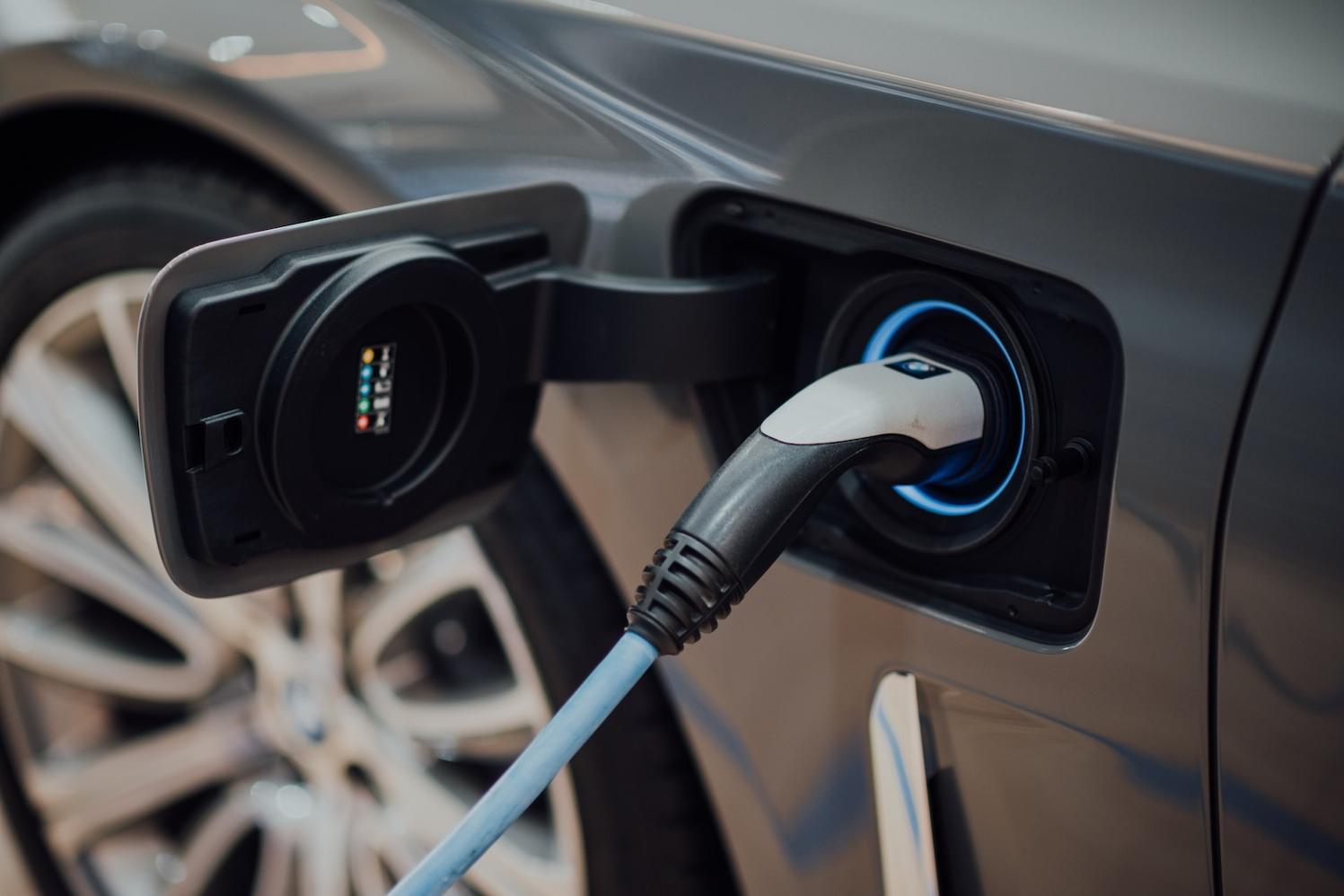

(Image: CHUTTERSNAP/Unsplash)
This story was originally published by Grist. Sign up for Grist's weekly newsletter here.
On a 20-acre parcel outside the tiny Southern California town of New Cuyama, a 1.5-megawatt solar farm uses the sun’s rays to slowly charge nearly 600 batteries in nearby cabinets. At night, when energy demand rises, that electricity is sent to the grid to power homes with clean energy.
To make renewable energy from intermittent sources like solar and wind available when it is most needed, it’s becoming more common to use batteries to store the power as it’s generated and transmit it later. But one thing about the Cuyama facility, which began operations this week, is less common: The batteries sending energy to the grid once powered electric vehicles.
The SEPV Cuyama facility, located about two hours northeast of Santa Barbara, is the second hybrid storage facility opened by B2U Storage Solutions. Its first facility, just outside Los Angeles, uses 1,300 retired batteries from Honda Clarity and Nissan Leaf EVs to store 28 megawatt-hours of power, enough to power about 9,500 homes.
The facilities are meant to prove the feasibility of giving EV batteries a second life as stationary storage before they are recycled. Doing so could increase the sustainability of the technology’s supply chain and reduce the need to mine critical minerals, while providing a cheaper way of building out grid-scale storage.
“This is what’s needed at massive scale,” said Freeman Hall, CEO of the Los Angeles-based large-scale storage system company.
Electric vehicle batteries are typically replaced when they reach 70 to 80 percent of their capacity, largely because the range they provide at that point begins to dwindle. Almost all of the critical materials inside them, including lithium, nickel, and cobalt, are reusable. A growing domestic recycling industry, supported by billions of dollars in loans from the Energy Department and incentives in the Inflation Reduction Act, is being built to prepare for what will one day be tens of millions of retired EV battery packs.
Before they are disassembled, however, studies show that around three quarters of decommissioned packs are suitable for a second life as stationary storage. (Some packs may not have enough life left in them, are too damaged from a collision, or otherwise faulty.)
“We were seeing the first generation of EVs end their time on the road, and 70 percent or more of those batteries have very strong residual value,” said Hall. “That should be utilized before all those batteries are recycled, and we’re just deferring recycling by three, four, or five years.”
Extending the useful life of EV batteries mitigates the impact of manufacturing them, said Maria Chavez, energy analyst at the Union of Concerned Scientists.
“The whole point of trying to deploy electric vehicles is to reduce emissions and reduce the negative impacts of things like manufacturing and extractive processes on our environment and our communities,” Chavez told Grist. “By extending the life of a battery, we reduce the need for further exploitation of our natural resources, we reduce the demand for raw materials, and we generally encourage a more sustainable process.”
Just as batteries have become crucial to reducing emissions from transportation, they’re also needed to fully realize the benefits of clean energy. Without stationary storage, wind and solar power can only feed the grid when the wind is blowing or the sun is shining.
“Being able to store it and use it when it’s most needed is a really important way to meet our energy needs,” Chavez said.
The use of utility-scale battery storage is expected to skyrocket, from 1.5 gigawatts of capacity in 2020 to 30 gigawatts by 2025. EV packs could provide a stockpile for that buildout. Hall said there are already at least 3 gigawatt-hours of decommissioned EV packs sitting around in the United States that could be deployed, and that the volume of them being removed from cars is doubling every two years.
“We’re going from a trickle when we started four years ago to a flood of batteries that are coming,” he said.
B2U says its technology allows batteries to be repurposed in a nearly “plug and play fashion.” They do not need to be disassembled, and units from multiple manufacturers — B2U has tested batteries from Honda, Nissan, Tesla, GM, and Ford — can be used in one system.
The packs are stored in large cabinets and managed with proprietary software, which monitors their safety and discharges and charges each battery based on its capacity. The batteries charge during the day from both the solar panels and the grid. Then B2U sells that power to utilities at night, when demand and prices are much higher.
Hall said using second-life batteries earns the same financial return as new grid-scale batteries at half the initial cost, and that for now, repurposing the packs is more lucrative for automakers than sending them straight to recyclers. Until the recycling industry grows, it’s still quite expensive to recycle them. By selling or leasing retired packs to a grid storage company, said Hall, manufacturers can squeeze out more value out of them.
That could even help drive down the cost of electric vehicles, he added. “The actual cost of leasing a battery on wheels should go down if the full value of the battery is enhanced and reused,” he said. “Everybody wins when we do reuse in a smart fashion.”
B2U expects to add storage to a third solar facility near Palmdale next year. The facilities are meant to prove the idea works, after which B2U plans to sell its hardware and software to other storage-project developers.
At the moment, though, planned deployment of the technology is limited. B2U predicts only about 6 percent of decommissioned EV batteries in the U.S. will be used for grid-scale storage by 2027.
“People are skeptical, and they should be, because it’s hard to do reuse of batteries,” said Hall. “But we’ve got a robust data set that does prove reliability, performance, and profitability. We’re at a point where we really can scale this.”
This article originally appeared in Grist. Grist is a nonprofit, independent media organization dedicated to telling stories of climate solutions and a just future. Learn more at Grist.org.
Empowering Consumers for a Sustainable Future: Overcoming Barriers and Building Trust
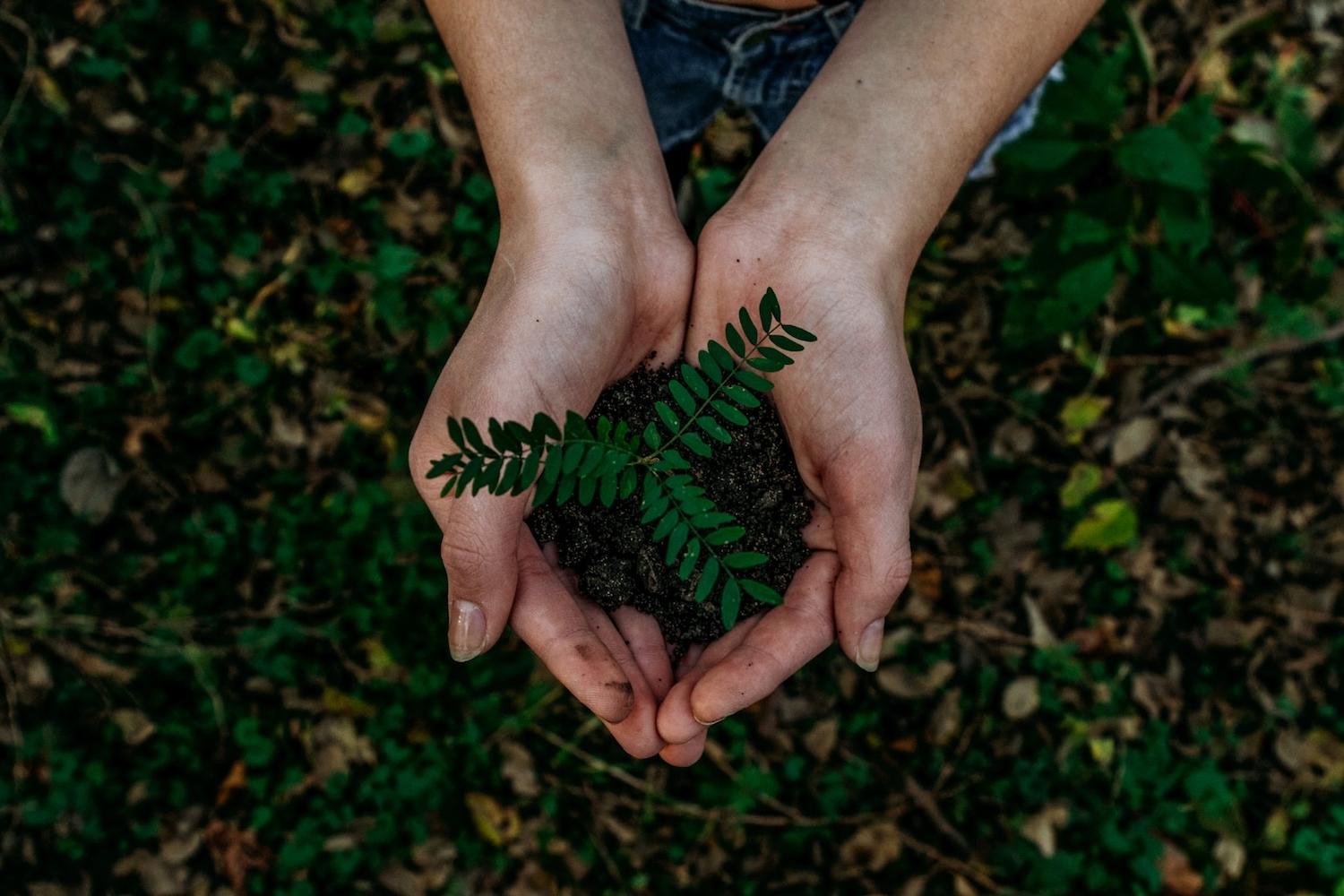

(Image: Noah Buscher/Unsplash)
This article is sponsored by Alibaba
In an era when environmental consciousness is becoming increasingly important, consumers worldwide are expressing a strong desire for more sustainable lifestyles. However, a recent independent study commissioned by Alibaba Group reveals that convenience and affordability remain significant barriers to adopting sustainable practices.
This article explores the findings of the study and highlights the crucial role that businesses can play in making sustainability more accessible. Through transparency, affordability and a commitment to sustainability, businesses can engender the trust of consumers and empower them to make conscious choices for a better future.
Bridging the gap: Convenience and affordability
The study, titled "The Sustainability Trends Report 2023," surveyed over 14,000 consumers across 14 markets. It found that convenience and affordability are key factors for consumer behavior. Consumers cite lack of information (48 percent) and high prices (45 percent) as the major obstacles preventing them from making more sustainable purchases. Businesses can address these concerns by making sustainable options more convenient and affordable.
Building trust through transparency
Consumers surveyed showed skepticism (38 percent) toward businesses' claims of sustainability, with only 15 percent expressing complete trust in such claims. Building trust is essential for businesses looking to engage consumers in sustainable practices, and transparency is key to bridging this trust gap.
By providing concrete evidence of their sustainable practices, businesses can demonstrate their commitment and earn the trust of consumers. This might be particularly important for consumers in European markets, where we measured higher levels of skepticism of sustainability claims.
Alibaba's commitment to sustainability
Alibaba Group’s approach to help address the sustainability challenge recognizes our unique capabilities as a digital platform company. As a result of Alibaba’s platform model and ecosystem, we are pioneering the concept of "Scope 3+." Scope 3+ refers to the emissions generated by a wider range of participants in a digital platform’s ecosystem, currently outside of the Scope 1, 2 and 3. Scope 3+ business ecosystem decarbonization supports technological and business model innovations to enable and engage with a broad range of stakeholders in more decarbonization actions
In our latest Environmental, Social, and Governance (ESG) Report, Alibaba disclosed its first annual Scope3+ decarbonization progress with state-of-the-art scientific measurements and third-party verification. Alibaba showed how a platform can help reduce barriers, increase transparency, and expand sustainable choices for consumers. Our Carbon88 carbon ledger and Low-carbon Friendly Products Program offers over 180 million consumers information and rewards for green choices across our diverse platforms, from selecting no cutlery in food delivery to choosing certified green products. Our Decarbonization-friendly Actions program works with leading consumer brands to design and offer more sustainable products sold on our platforms.
The result of these efforts is to make sustainable choices more abundant and transparent, while maintaining their affordability.
Empowering consumers for a sustainable future
On a positive note, the survey results show that consumers globally are eager to learn and engage in sustainable practices. Over three-quarters (76 percent) express a desire for more information on how to be more sustainable, with emerging Asian markets showcasing the highest willingness to learn.
Businesses can facilitate this learning process by providing accessible information and educational resources. Respondents also emphasized the importance of affordability, sustainable packaging, and wider product choices. By fulfilling these expectations, businesses can help consumers make sustainable choices with ease.
Technology as a catalyst for sustainability
The research shows that technology and digitalization can be pivotal in supporting consumers to lead more sustainable lives. Over half of online shoppers (57 percent) are utilizing digital marketplaces dedicated to sustainable products. This trend is particularly prominent in Asian emerging markets, with the Philippines (76 percent), Indonesia (73 percent) and Thailand (70 percent) leading the way.
Businesses have an opportunity to leverage technology to streamline information and search processes to address consumers who cite a lack of information (48 percent) and a time-consuming research process (27 percent) for discouraging buying sustainable products. Companies might also consider digital marketplaces tailored to sustainable products. The study highlights the untapped potential of digital platforms, particularly in Asian emerging markets, where online shoppers express high preferences for buying sustainable products.
Businesses, particularly digital platform operators like Alibaba Group, have a crucial role to play in overcoming these obstacles. By prioritizing transparency, affordability and a diverse abundance of sustainable options, businesses can earn the trust of consumers and give them more conscious options. Together, businesses and consumers can pave the way for a sustainable future that benefits both the environment and society as a whole.
This article is sponsored by Alibaba
Embracing Planetary Boundaries is the Secret to Business Success


From rolling rivers to honeybees, the ecosystem services nature provides are crucial to business success, but many businesses fail to account for them. By doing business with planetary boundaries in mind, companies can fortify their economic resilience and outpace their peers. (Image: Dmitry Grigoriev/Unsplash)
Standard business practices have stretched far beyond planetary boundaries — placing Earth’s climate biodiversity and ecosystem services on the brink of collapse. Companies must reduce environmental impacts. It isn’t only a moral imperative — it’s essential to business survival.
Planetary boundaries are nine critical thresholds that delineate the limits of Earth’s essential functions. When the world operates within these limits, the planet functions like a well-oiled machine, benefiting businesses and the general well-being of all species. When the world operates outside those limits, there are devastating consequences — such as extreme weather events, mass extinctions, land degradation, droughts and pollution.
But it’s not all sacrifice. Bringing business operations back within planetary boundaries will unlock competitive benefits, such as increased economic resilience, reduced operational risk and an edge against competitors.
A matter of business survival, not just success
An analysis of financial disclosures found that over 200 of the world’s biggest corporations will face $1 trillion in climate change-related costs in the decades ahead. These companies also estimated $250 billion in assets may need to be written off or retired early due to high-risk location and government regulation. Other studies go even further, estimating up to $24.2 trillion in costs to the global financial sector.
While markets have not yet collapsed, there are many examples of significant business challenges related to droughts, biodiversity loss and extreme weather.
Droughts: Back in 2015, drought conditions in California contributed to a 28 percent decline in Campbell’s carrot business profit and forced Starbucks to move its water bottling operations to Pennsylvania. And last year, heatwaves and droughts in Europe resulted in steep drops in corn, sunflower and soybean yields.
As the planet warms, scientists predict droughts will become more frequent and severe. Local and federal governments will make tough decisions on who can use limited water resources, prioritizing essential services and citizens. Businesses producing non-essential goods and services will be at risk.
Extreme weather: In 2019, PG&E filed for bankruptcy due to $30 billion in liabilities from wildfires potentially caused by its power lines. Hurricanes have repeatedly devastated the tourism industry in Puerto Rico, causing hundreds of billions in damages. Due to record-high precipitation, floods in the U.S. Northeast are estimated to result in $5 billion in losses from New Jersey to Vermont this year. Businesses large and small can expect devastating liabilities, service disruptions, and loss of revenue as workforce continuity takes a hit.
Biodiversity loss: More than half of the world’s gross domestic product depends on ecosystem services, and their functional decline already costs the global economy $5 trillion a year. Food businesses are particularly strained by biodiversity loss. More than 75 percent of global food crops rely on pollinators, which are dying at rapid rates. Marine species loss from climate change and overfishing has resulted in insurmountable challenges for fisherman and the rapid decline of cod, crab and shrimp in the U.S. In Europe, Baltic fisheries are even forced to shutter operations due to regulatory pressure or just a lack of fish to catch.
Less biodiverse ecosystems are also sensitive to invasive species. Roughly 20 percent of Earth’s land and water are currently at risk, and scientists estimate the effects of invasive species have already taken a $1.3 trillion financial toll in just 40 years.
The benefits of heeding planetary boundaries
Despite the risks, many corporate leaders cite "high investment, low return" and industry competition as excuses to maintain or even increase environmental impact. But by bringing operations within planetary boundaries, companies can fortify their economic resilience and even outpace peers.
Improve economic resilience: The organic agriculture market is a great example of how alignment with planetary boundaries can increase economic resilience. Most nitrogen-based fertilizers are derived from the ammonia manufactured through natural gas. When the Russia-Ukraine war began, international sanctions on Russia caused natural gas prices to skyrocket. But due to industry standards that forbid the use of nitrogen-based fertilizers, organic producers kept costs stable while the rest of the market struggled.
As the world works to reduce the consumption of fossil-based materials, companies that are less dependent on fossil-based resources are shielded from risks posed by regulatory and inflationary challenges.
Outpace competitors: Contrary to popular belief, global studies show that the most sustainable companies are usually also the most profitable. Take Patagonia, for example: It’s one of the world’s largest and best-known outdoor apparel brands, approaching $1 billion a year in profits. Yet its "slow fashion" model helps the company align with planetary boundaries. Patagonia makes over 80 percent of its products from recycled materials, and the company’s free repair services and Worn Wear program extend the lifecycle of damaged and secondhand products.
See also the industry rise of sustainable native companies such as Veja, Native, Who Gives a Crap and Beyond Meat. These startups have embraced sustainable operations from the start and have flourished in the market both from a consumer brand perception and financial perspective, forcing traditional competitors to adapt.
Taking the first step
Humanity has an unconscious belief that it has separated itself from nature. The reality is that we are more dependent on the planet than ever before.
Discussing planetary boundaries in the boardroom starts with understanding operational dependency on nature. Start with these questions:
- Which commodities or sourcing areas is the business model most dependent on?
- How will climate change, biodiversity loss, and water scarcity impact key commodities or sourcing areas?
- What ecosystem services (such as pollination, water purification or soil moisture) are critical to business operations?
- If these ecosystem services ceased their function, how much would it affect the bottom line?
- Is the company currently replacing an ecosystem service (such as diverting water to a drought-stricken area, or transporting bees to pollinate plants)? If so, how much does it cost each year?
Every company is dependent on nature in some way, but many will quickly realize they don’t have answers to these simple questions. Nature dependencies are often missing from risk evaluations.
Once identified, leaders can develop a holistic plan to address environmental impact on all operational levels. While there is no silver bullet, companies must stop working against nature and begin working within planetary boundaries. The cost of inaction far exceeds action, and nature is coming to collect.
Storytelling Empowers Young and Underrepresented Voices in the Climate Movement
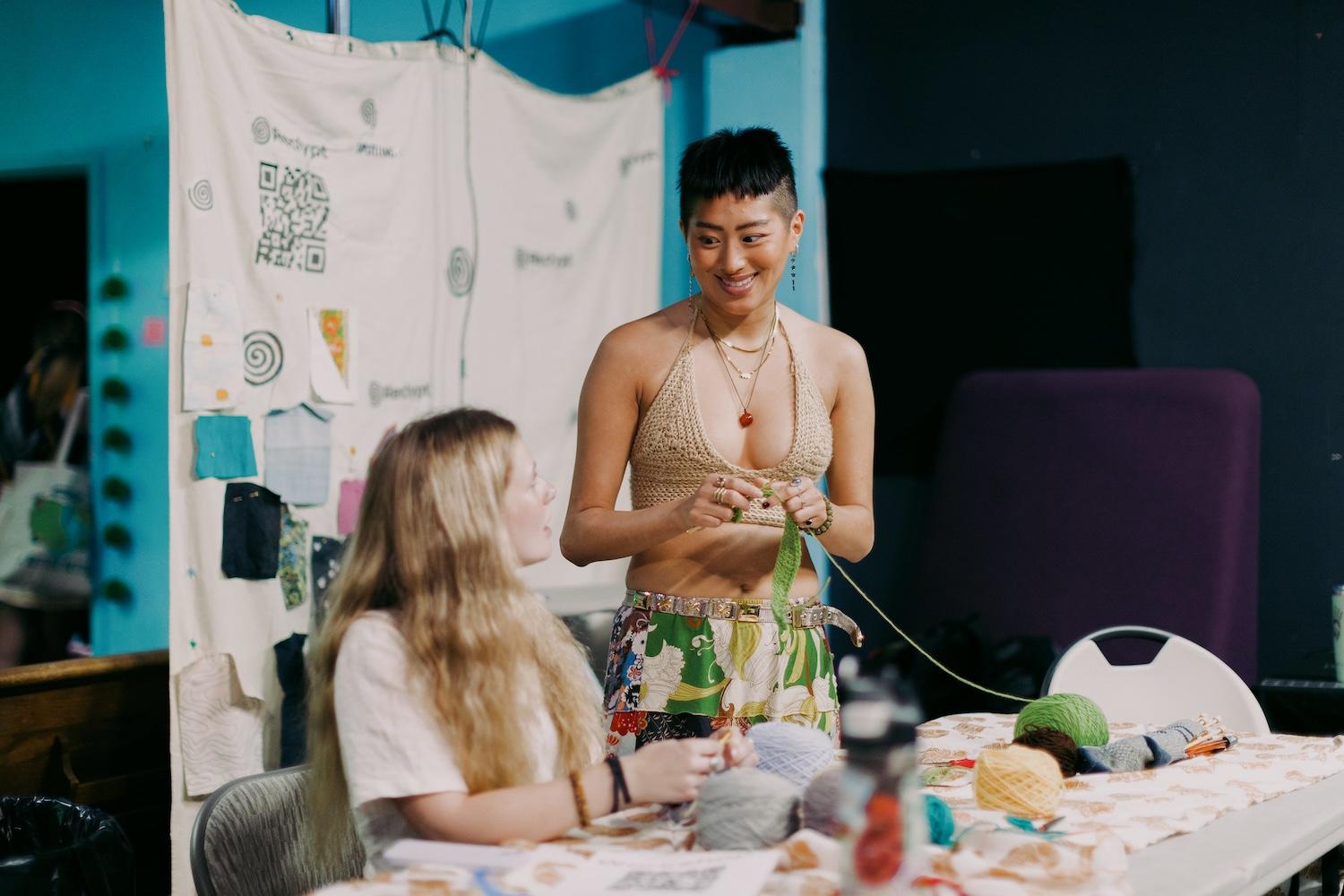

Young people repair clothes at a pop-up event on the sidelines of Climate Week in September. (Image: The Climate Group/Flickr)
Climate action and climate justice movements don’t always feel like spaces that recognize or welcome folks from diverse and underrepresented backgrounds. Effective storytelling can create a sense of belonging and inspire real action on the ground. Yet too often the power of storytelling is underestimated.
A rising chorus of young and diverse storytellers want to change that narrative, building on a growing body of evidence that demonstrates storytelling can change human behavior. Connecting personal narratives to the challenge of climate change sparks emotional responses that ease anxiety and promote a sense of agency rather than helplessness, according to a 2023 analysis published in Psychology Today.
That is the experience of a group of young climate activists who distilled their approach to effective storytelling in a panel discussion on storytelling for climate action and climate justice at the Nest Climate Campus event during Climate Week this fall.
As they shared their personal histories and experiences, six distinct themes emerged as the throughlines of an effective narrative to win not just the minds, but also the hearts of those who might feel disenfranchised or disaffected by the climate movement. Done well, storytelling around the climate crisis will:
- Invite a sense of belonging
- Create an emotional connection
- Acknowledge the importance of culture
- Actively engage the listener
- Embrace each person’s unique identity
- Offer solutions and action, not gloom and doom
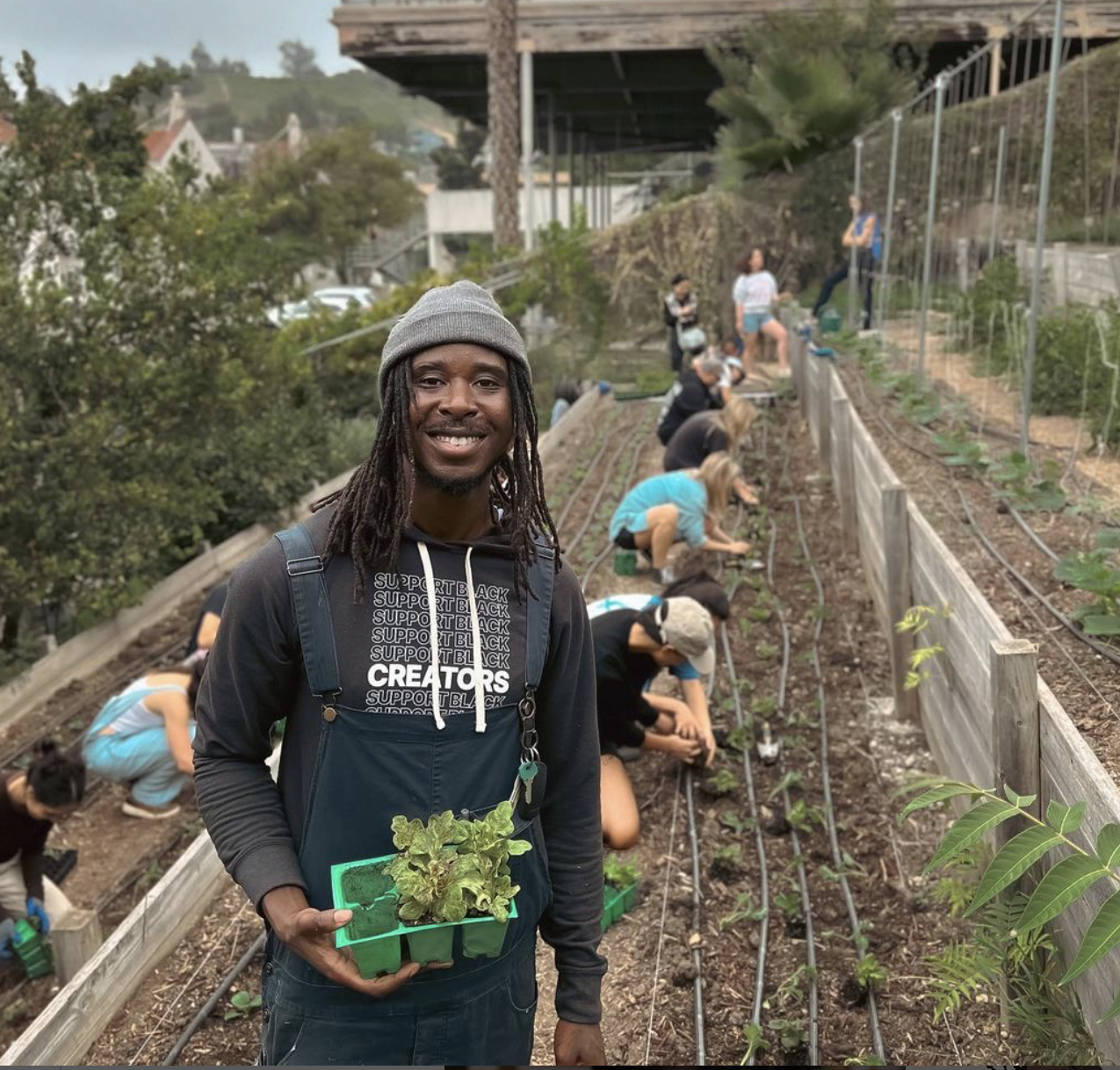
Invite a sense of belonging
When he became interested in plants more than a decade ago, Nelson ZêPequéno said he was looked down on for working with flowers as a Black male.
“In our culture, it wasn’t encouraged for us to be in nature,” said ZêPequéno, a Los-Angeles-based artist and founder of the viral Instagram page @BlackMenWithGardens. “There is the traumatic history of our forced tutelage in the fields and a lack of access to these natural spaces. As a result, a lot of our culture is based on other things. It was more likely for me growing up to think that I could be an NBA player than a climate justice warrior.”
He began to see more and more people in his community interested in gardening at home and farming, but he saw few visual references to that growing movement. To bring these stories to light he started @BlackMenWithGardens, which today has more than 152,000 followers.
@BlackMenWithGardens features reposted stories of Black men and boys connecting with nature and chronicles ZêPequéno's own journey in the garden — creating a shared online space that allows people traditionally left out of this community feel included in it. Storytellers can do the same by being open about their own stories of entering a space that wasn't always inclusive and sharing their platforms with others who are navigating similar challenges, helping audiences to see they are not alone.
As ZêPequéno felt more connected to the environment and part of nature through plants, he brings the stories of “other men, boys, fathers, sons, uncles reconnecting with nature and, by doing so, encouraging them to take more stewardship for it,” he said.

Create an emotional connection
Sustainable fashion blogger, photojournalist and labor rights activist Aditi Mayer was inspired to make fashion her storytelling platform when she learned about the collapse of the Rana Plaza factory building in Bangladesh in 2013 — the garment industry’s worst industrial incident in history in which 1,110 lives were lost and over 2,000 people were injured.
“It got me thinking about the politics of labor in the fashion industry and to look at the ills of our dominant fashion model from a social and environmental perspective,” Mayer said. “As time went on, I got interested in the solutions part of the space. What does the alternative look like? From there, storytelling became a really critical tool.”
Today she is a self-described “multi-hyphenate,” using film, photography, and journalism to examine the fashion industry through a lens of decolonization and sustainability, including as a storytelling fellow for National Geographic. From her immigrant family, she learned the value of “using fewer resources, mending clothes and passing things down,” she said.
“Today I use my platform to challenge the Instagram influencer who never wears the same outfit twice to instead champion that sustainability is a lifestyle you embody,” she said. “I work from an emotional, heart-centered space, which I think is critical because if this work was about shocking statistics to make us act, we would have acted a long time ago.”
A key learning for Mayer as a storyteller was understanding the broader historical and cultural context of the issue she wanted to spotlight: environmental and social harm in the fashion industry. As she learned, an effective story isn’t about having all the answers but in asking the right questions of the right people, like the woman artisans of rural India whose stories and knowledge were often overlooked in the modern fashion industry.
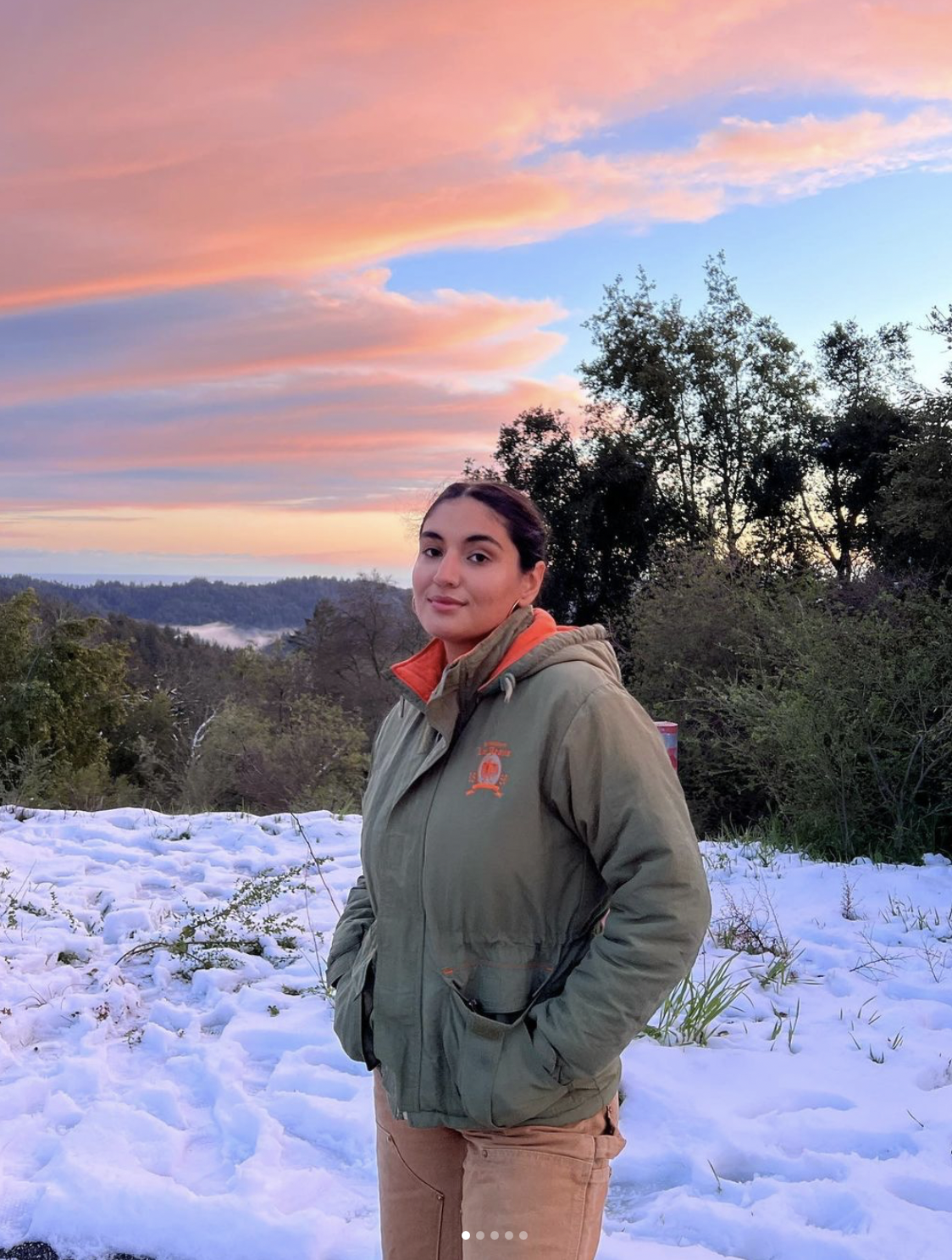
Acknowledge the importance of culture
As a young girl spending her earliest years in her native Iran, Kiana Kazemi, co-founder and programs director for the climate justice collective Intersectional Environmentalist, recalled how her grandparents took her traveling all over the rich and varied landscape of the country, wanting to pass along a connection to the land. Those impressions stayed with her, and part of that legacy is a sense of optimism, she said.
“It was the first time I learned that my relationship to nature was deeply connected to nature, language, spirituality,” Kazemi said. “When I moved to the U.S. when I was 16 and heard about climate justice, all these ideas clicked for me — all these frameworks could exist together and make us better environmentalists and have a deeper impact on this earth.”
Kazemi works with her team at Intersectional Environmentalist to highlight diverse voices by offering training and consulting, creating resources and activations, and deepening awareness about environmental justice and solutions.
Climate storytelling often becomes more persuasive when people can connect on a deeper and more personal level. That could be how family heritage is intimately linked to nature and landscape, as in Kazemi’s case, or, for example, by acknowledging that connection to nature is also about language, spirituality or some other cultural touchstone.
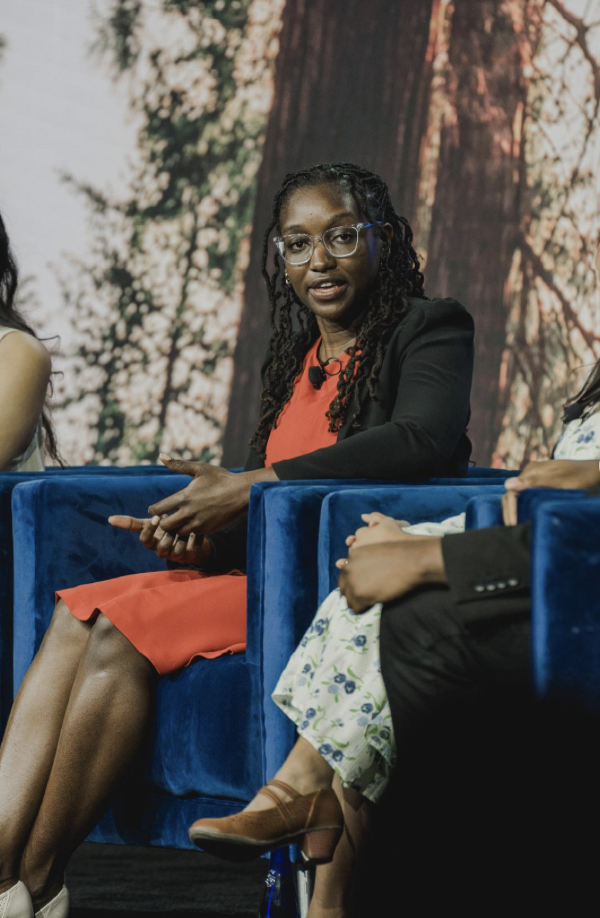
Actively engage the listener
It was the story of Kenyan activist and Nobel Prize winner Wangarĩ Muta Maathai, who founded the tree-planting Green Belt movement, that inspired Clara Kitongo on her path.
Through her work as the tree equity manager of Tree Pittsburgh, Kitongo brings her Ghanaian roots of responsibility for the land to engage communities in creating healthy urban forests, she said. She finds that their active engagement makes all the difference.
While meeting with a group of elderly women about tree planting, Kitongo was struck by how the women’s memories of the trees they enjoyed in childhood “brought the entire project to life for them. I have learned not to assume I have all the solutions but to listen,” she said. It is the same experience when she meets with children and young adults. When she listens to their stories, they are more likely to engage.
Indeed, “the most important predictor of young people talking about their climate feeling was whether they felt listened to,” according to a recent survey of young people’s experience talking about the emotional impacts of climate change.
Similarly, when ZêPequéno gardens with Black men and boys, he encourages them to “get their hands in the dirt,” he said. “I want them to learn organically. With disaffected communities, that is the main way they will learn. Storytelling is a great way to indirectly teach someone something. It becomes a core value received through a narrative.”
Storytelling as an indirect teaching tool is powerful, as these activists found. Bombarding people with frightening facts and big numbers that don’t seem to have bearing on their own lives or communities can make people despondent or cynical. Stories, on the other hand, bring data to life and place it into a context, creating relevance about why it matters.

Embrace each person’s unique identity
For Jothsna Harris, founder of Change Narrative, her work to build capacity for the climate justice movement by using the power of diverse voices came after understanding the threads of her complex past. Her grandmother was a farmer in rural India, and her father immigrated to the United States in 1969 to create new opportunities for his family.
“I was raised knowing my worth and my value, but also that we should assimilate to be successful,” said Harris, who has farmed for the past eight years, following in her grandmother’s footsteps. “It has taken me years to unpack that and really understand we need to stand in our own unique identity.”
Her work today is dedicated to “shifting the narrative to include the perspectives and stories that are typically missing” and “the emotions and identities and vulnerability, as this is what connects us as human,” she said.
Storytelling that invites a sense of belonging for all people, no matter their background, is a vital tool for creating a narrative around climate action and justice that is more democratic and inclusive.
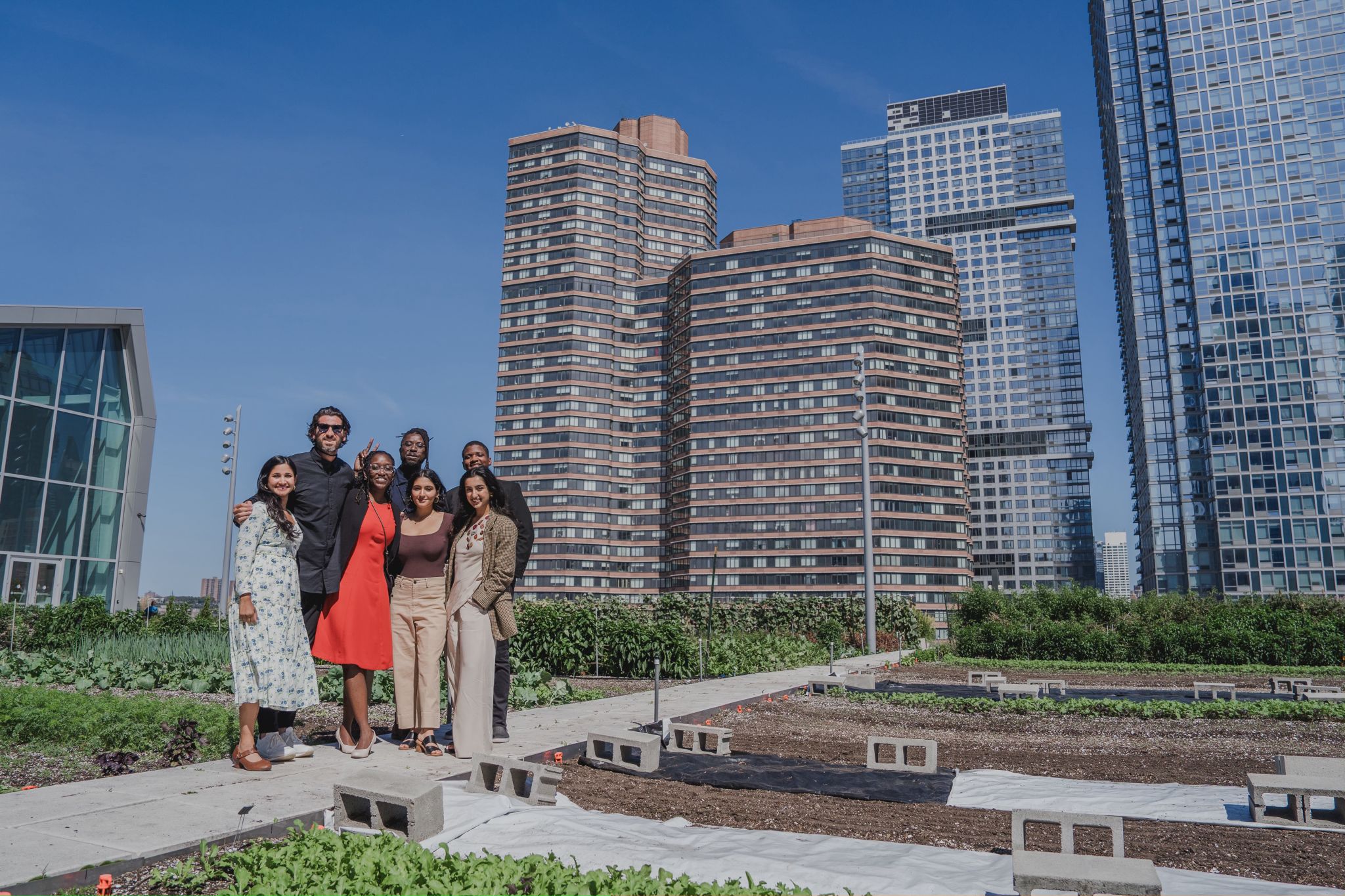
Offer solutions and action, not gloom and doom
Studies show that eco-anxiety — a chronic fear of environmental catastrophe as a result of the impacts of climate change — is on the rise. Sixty-nine percent of Gen Z respondents feel anxious after consuming content about climate change, according to a Pew Research Center study.
Storytelling can help assuage that anxiety. Young people “have been confronted with gloom-and-doom stories on media, of cities being demolished by climate disasters, and that is heartbreaking," Kazemi said. "But it is important that we talk about the solutions and the frontline communities that are really doing the action-oriented solutions work.”
Harris agreed. “Any culture movement I can think of has always included the power of narrative as the underbelly. When I think of social movements, I think about the stories,” she said.
The key in shifting to a more positive narrative is to tap into every human being’s connection to nature, which will almost always create the space for a deeper understanding of how climate change is threatening that connection.

Great storytelling passes the mic to climate heroes
Matt Scott, director of storytelling and engagement at the climate solutions nonprofit Project Drawdown, knows the power of story through his role as the producer of “Drawdown’s Neighborhood,” a documentary series that highlights unheralded climate heroes.
“For a long time, I did not connect with the culture of the environment and the stories being told. When you don’t see yourself represented, you don’t enter those spaces,” Scott said. “Today my role is to pass the mic to climate heroes whose stories aren’t heard as often and to elevate climate action in the process.”
Bringing underrepresented groups into the story circle is a critical element in climate justice, Harris said. “These are the people experiencing not only a disproportionate amount of the impacts but who have proximity to and perspective on the issues. Their stories are the essential testimonies needed to understand how to incorporate justice into the solutions we’re seeking.”
What Should We Do With All of This Empty Office Space?
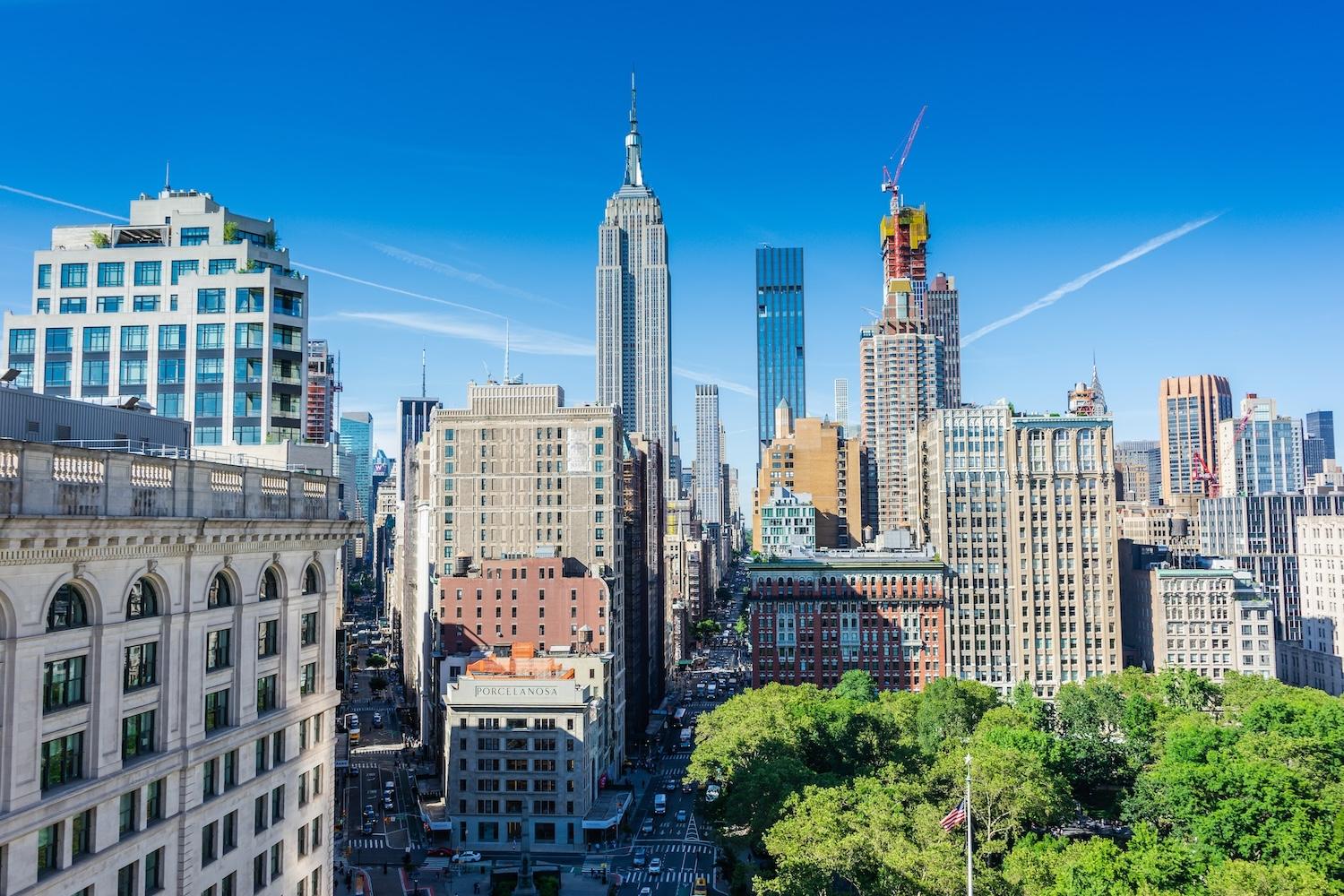
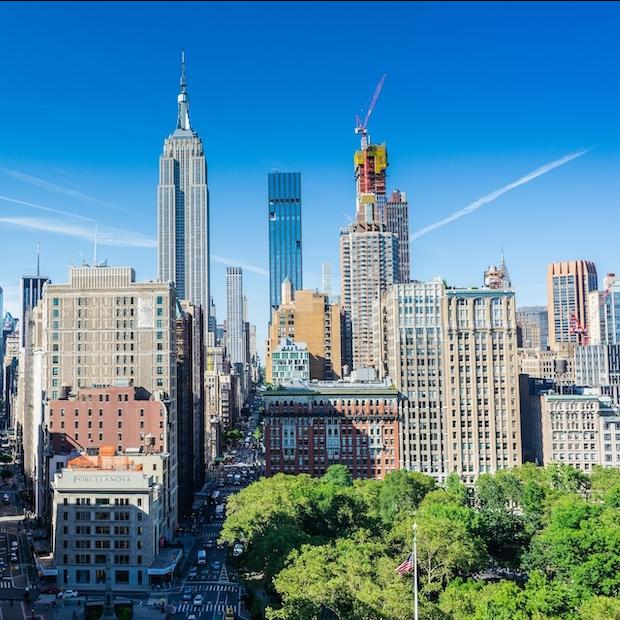
(Image: Jason Krieger/Unsplash)
This story on converting unused office space to affordable housing is part of The Solutions Effect, a monthly newsletter covering the best of solutions journalism in the sustainability and social impact space. If you aren't already getting this newsletter, you can sign up here.
All year we’ve seen companies across the United States take their stance on returning to in-person work. We can debate the importance of in-office collaboration and whether remote work boosts or hampers productivity well into next year, and I bet we will. But what if returning to the office doesn't mean people working there?
Downtowns are struggling without office workers. Small businesses built to meet the needs of those commuting to work, like lunch spots and corner stores, cannot survive when their clientele stops showing up. Many companies are requiring their employees to return to in-person work at least part-time, but remote work seems to be here to stay. Around 40 percent of businesses still say the majority of their employees work both from home and in the office, though this rate has decreased significantly since last year, according to a 2023 survey of over 500 business owners and facilities managers by the hybrid workplace platform Robin.
This year, office space is on track to reach a net decline for the first time since 2000 — likely for the first time in history, but the data doesn’t go back further than that — as Bloomberg reported in July. Seventy-five percent of businesses plan to downsize their office space next year, and 82 percent are worried they can’t keep their current space due to underutilization or a recession, according to Robin’s 2023 survey.
Meanwhile, cities are facing a concurrent problem: an affordable housing shortage. The U.S. is 7.3 million rental homes short of meeting the needs of renters with extremely low incomes, according to the National Low Income Housing Coalition. “That is, incomes at or below either the federal poverty guideline or 30 percent of their area median income, whichever is greater. Only 33 affordable and available rental homes exist for every 100 extremely low-income renter households.”
So, the U.S. needs millions of affordable apartments, and downtowns full of half-empty offices need foot traffic to sustain the local economy. You can probably see where this is going.
In the rural part of the Midwest where I grew up, it’s become normal to enter a Family Video building — recognizable by the signature glass pillar out front — with no intention of picking out a movie, as many of them were transformed into entirely new stores when everyone stopped renting DVDs. Our buildings evolve with us. Who’s to say that what we think of as a high-rise building stuffed with cubicles now can’t be a typical apartment building in the future?
Across the country, 45,000 offices are currently under renovation to become rental apartments, according to a 2023 report from the apartment listing service RentCafe. Converting empty commercial and office space into living space offers the opportunity to address both problems with a single solution. Some developers already made this a reality. In Rochester, New York, designers added windows, courtyards, and rooms to an old Sears building to convert it into a 73-unit apartment complex for low-income seniors, Fast Company reported earlier this month. The project was made possible with tax credits for low-income housing and financial support from the city.
In Philadelphia, an office building from 1929 was converted into 206 apartments back in 2014. Buildings from this era were designed with features like opening windows and offices with no more than 26 feet between the outer wall and the central corridor. Thus, they are easier to turn into rental units that get plenty of natural light without having to significantly alter the structure of the building, The New York Times reports.
It’s not impossible to transform modern offices that are wider, taller and further away from the design of a typical apartment building, either. A 457,000-square-foot office built in New York City in 1970 was made into an apartment complex in 2017, The New York Times reports. Still, redesigning buildings like this is an expensive, complicated task. Among other things, the developers had to add a courtyard through the center of the building and replace the exterior walls of inoperable windows to make it work. Laws that require residential units to have windows that open vary across the country, but they are necessary in New York.
Apart from the difficult design process, zoning regulations often limit what’s possible, and the overall cost often pushes rents into the luxury price point so developers can recoup their losses. But like the Sears project in Rochester, cities can make affordable units a feasible part of these projects with economic incentives like tax reductions and subsidies.
Starting in 2024, a new pilot project in Boston will offer reduced property taxes for those who convert their commercial office space for residential use. The mayor of Washington, D.C. also proposed expanding the city’s property tax break program for commercial-to-residential developments this year. Several projects are already underway in D.C., totaling an estimated 2,500 new apartments. At least one — a 1980s office building previously used as the headquarters for the National Association for the Education of Young Children — is set to be completed by next year.
Of course, there is no one-size-fits-all way to utilize vacant downtown spaces and address the housing crisis. This is just one option in the slew of solutions required to address the issues. While office space redesigns aren’t possible everywhere, they are succeeding in some locations, and many other buildings hold the same untapped potential.
Dive deeper into this solution:
- This old Sears store is now an apartment building, Fast Company
- Here’s How to Solve a 25-Story Rubik’s Cube, The New York Times
- Video: What It Takes to Convert a Multimillion-Dollar Office Into Housing, The Wall Street Journal
It Takes a Village: The Evolution of a Homegrown Solution to Ocean Plastic Pollution
Sungai Watch river warriors install one of the organization's trash barriers. The barrier will float on the water and collect the garbage flowing down the river before it can make its way to the ocean. (Image courtesy of Sungai Watch)
Kelly Bencheghib stands hip-deep in plastic in one of Bali’s most polluted rivers in the heart of Denpasar, the island’s capital city. While volunteer cleanup crews in the United States are picking up pieces of plastic deposited on their favorite beaches, in Indonesia, the plastic onslaught is a tsunami.
Indonesia is the fifth largest contributor of marine plastic to the ocean, according to a 2021 study published in the peer-reviewed journal Science Advances. The country's Ministry of Environment and Forestry says 59 percent of its 564 rivers are heavily polluted.
Bencheghib and her siblings, Gary and Sam, are attacking the issue alongside 120 ”river warriors” they employ to clean rivers and beaches in the province of Bali and beyond. Their environmental organization — Sungai Watch — sees people, not just technology, as the ultimate solution.
The goal: keep plastic from reaching the ocean and beaches by cleaning rivers.
Global interests, from the United Nations to the world’s largest corporations, are grappling with the changes needed to address the ocean plastic crisis. However, some of the best solutions are happening where the crisis hits home, run by people like the Bencheghib siblings.
They grew up in Bali, surfing, going to the beach, and seeing plastic pollution impact their home. “We thought it wasn’t normal and wanted to do something,” Kelly Bencheghib said. “As teenagers, we didn’t have any funds, but we had tons of energy.”
They started a youth-led organization called Make a Change Bali when Kelly was 16, Gary was 14 and Sam was 12. The group cleaned beaches every weekend and generated community interest to help. As they grew older, the three expanded the scope of the organization and renamed it Make a Change World.
“Our goal was just to get plastic pollution on front-page news by mixing expeditions and adventure with the topic,” Bencheghib said. They used film and social media to reach large audiences. In 2016, Gary and five friends navigated a raft down the Mississippi River while making an award-winning documentary called “Traveling on Trash.”
A year later, Gary and Sam made two plastic bottle rafts and floated down the plastic-polluted Citarum River in Indonesia. “That’s when we realized rivers are the connection point between life on land and life on the ocean,” Bencheghib said.
The Citarum expedition caught the attention of Indonesia’s president. After he saw the videos the siblings produced, he mobilized 7,000 soldiers for the largest river cleanup in Indonesia to date.
After they graduated college, Kelly, Sam and Gary redoubled their efforts. They started by experimenting with various barriers to capture trash in rivers. Even though they weren’t a formal organization, WWF gave them their first grant which allowed them to rent a place to sort trash other than in their parents' garage.
Now, the siblings are the core organizational group at Sungai Watch, where they and their team of river warriors work six days a week to clean 180 trash barriers.
All of the warriors are paid employees. “It is such hard work. It is a given that they should be taken care of as much as possible and be given job security,” Bencheghib said. Volunteers are also a huge resource, particularly for weekly village cleanups.
Data is critical to their work. In its 2022 Impact Report, Sungai Watch audited 235,218 individual waste items to identify the source of the pollution to drive conversations with the government and the companies most responsible.
Sungai Watch installed its first trash barrier on October 10, 2020. As of October 30 of this year, 180 barriers are installed, 800 community cleanups were held, and the organization has collected more than 1.5 million kilograms (over 3.3 million pounds) of plastic.
Yet, the organization pointed out in its impact report that no matter how many barriers are installed, plastic continues to enter the rivers at devastating speeds. So, having just passed the three-year anniversary of deploying its first barrier, the group is using what it learned to develop a village-based intervention model to stop the plastic before it reaches the river.
There are three primary sources of the trash that makes its way into Indonesia’s rivers: people throw it into the canals that flow past their homes, it’s dumped in illegal landfills and it’s thrown off bridges.
Changing these practices at the village level is the critical step to stopping the flow of plastic. “We learned that we have to work closely with communities and that it is very cultural,” Bencheghib said. “How you speak to people is super important. You have to be very humble. Community work must be accomplished before the why, the how, and the what needed to move forward.”
While the ultimate goal is to keep the ocean free of plastic and help the people relate more to the river through culture. Stories from the older generation evoke fond memories of being able to swim and fish. Returning a sense of ownership is essential to the villages’ understanding that restoring rivers to a more pristine state is achievable.
Sungai Watch hopes to finalize the intervention model in the next few months and will share it with “whoever wants to replicate it, get inspired from it and adapt it to their community,” Bencheghib said. The basic elements include removing 100,000 kilograms (just under 220,500 pounds) of plastic per year, installing 15 trash barriers, hosting weekly community cleanups and monthly community outreach sessions, establishing one local sorting and processing station, and employing a local team of river warriors.
The organization’s effort is already showing success. Fish returned to one of the nine villages they work with, as have a community of fishermen who fish in mangroves that were cleaned up by Sungai Watch. “When you clean rivers, the fish life comes back, and we hope to see that replicated in many more rivers,” Bencheghib said.
The scope of its work continues to expand. To better utilize plastic waste, the Bencheghib siblings launched an in-house social enterprise called Sungai Design which creates furniture out of some of the plastic collected. They are putting together the first catalog of products, and profits will go directly to supporting Sungai Watch. In addition to working with more villages in Indonesia, they plan to expand to the Philippines in 2024.
REI Brings the Outdoors Into New Building Design
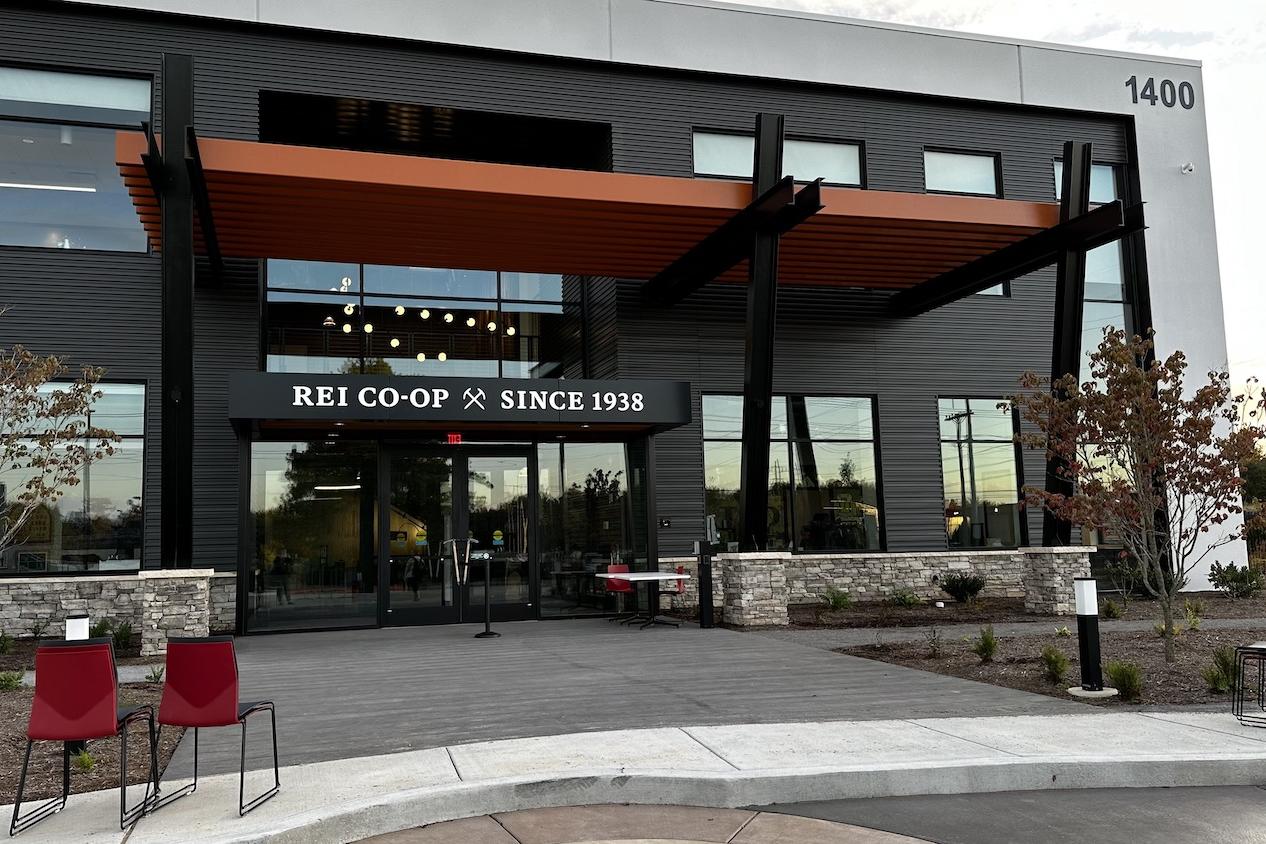

REI's new distribution center in Lebanon, Tennessee, ships goods to more than 60 stores in the area. (Image courtesy of REI Co-op)
In an economy that often pits people against the planet, outdoor recreation retailer REI is trying out a different path with its new distribution center in Lebanon, Tennessee. The center, which ships goods to more than 60 stores in the area, was specifically designed to address both worker well-being and environmental impact simultaneously.
“At its core, if we start with climate, we're solving for a healthy environment, right? A healthy world well into the future that supports all types of ecosystems,” said Andrew Dempsey, senior manager of sustainability at REI. “But it's really the intersection of that in support of people. That's an outcome that we feel is most important.” It all goes back to REI’s core mission, Dempsey said, “which is to get folks outside.”
A changing climate does not bode well for outdoor activity
The future of outdoor recreation is undoubtedly under threat as the climate crisis worsens. With rates of extreme temperatures intensifying, being active outside is hazardous more and more days per year — even for healthy people. It’s not just heat waves or extreme cold that threaten recreation. Increasing wildfire risks put recreational areas and nearby outdoor enthusiasts in danger, while the smoke from those fires further contributes to negative health effects. Bigger storms, longer droughts, and changing rainfall patterns that lead to flooding are all contributing to an untenable situation for those who want to enjoy the great outdoors. And it’s bad for the businesses that supply them with gear, too.
“We do feel it's an existential threat to the future of our business and to the future of life outside,” Dempsey said. REI’s response to this is an all-hands-on-deck approach, which is why the company paid special attention to every aspect of the design for its new distribution center.
“We really did seek to consider the entire lifecycle carbon impacts of the building, from design through construction and operation,” he said. “We looked at the embodied carbon of a couple of major material types within the building — concrete and steel — and worked with our builder to [source] materials for both of those that have lower embodied carbon than would have been their standard in the area.”
Harnessing renewable energy while increasing efficiency at the new REI distribution center
Normally buildings like this are heated with natural gas. The Lebanon distribution center has a 1.1-megawatt rooftop solar array that meets about two-thirds of its energy needs. The remainder is procured from a renewable energy provider. “We're not burning any fossil fuels on-site. We have electric heat pump heating systems,” Dempsey said. “So 100 percent electric, 100 percent renewable energy.”
Not only is all of the energy renewable, but the building was also designed with efficiency in mind — beating code requirements by over 30 percent. “We feel like we've built a building that sets up a best-in-class sample for warehouses and for this building type in fighting the climate crisis,” he said.
Bringing the outdoors into the workday
Using electric forklifts and conveyor belts with sensors that only run when they are moving product makes the new distribution center much quieter than what's typical, which is better for employees for whom noise can take a toll. The 90 skylights on the roof — twice as many as the company’s last distribution center — are also a big part of creating a more natural environment inside. Adding more windows is a simple thing companies can do to nurture a connection to the outdoors, Dempsey said.
“When you're in these spaces it feels different. Natural daylight feels different. You have a connection to where the sun is, what time of day it is outside,” he said. “Typically, warehouses are dark, cavernous spaces. Where you don't have a connection to the outside. You have no access to views, no access to daylight. And you're working in a space that, from a basic human level, may not be all that comfortable.”
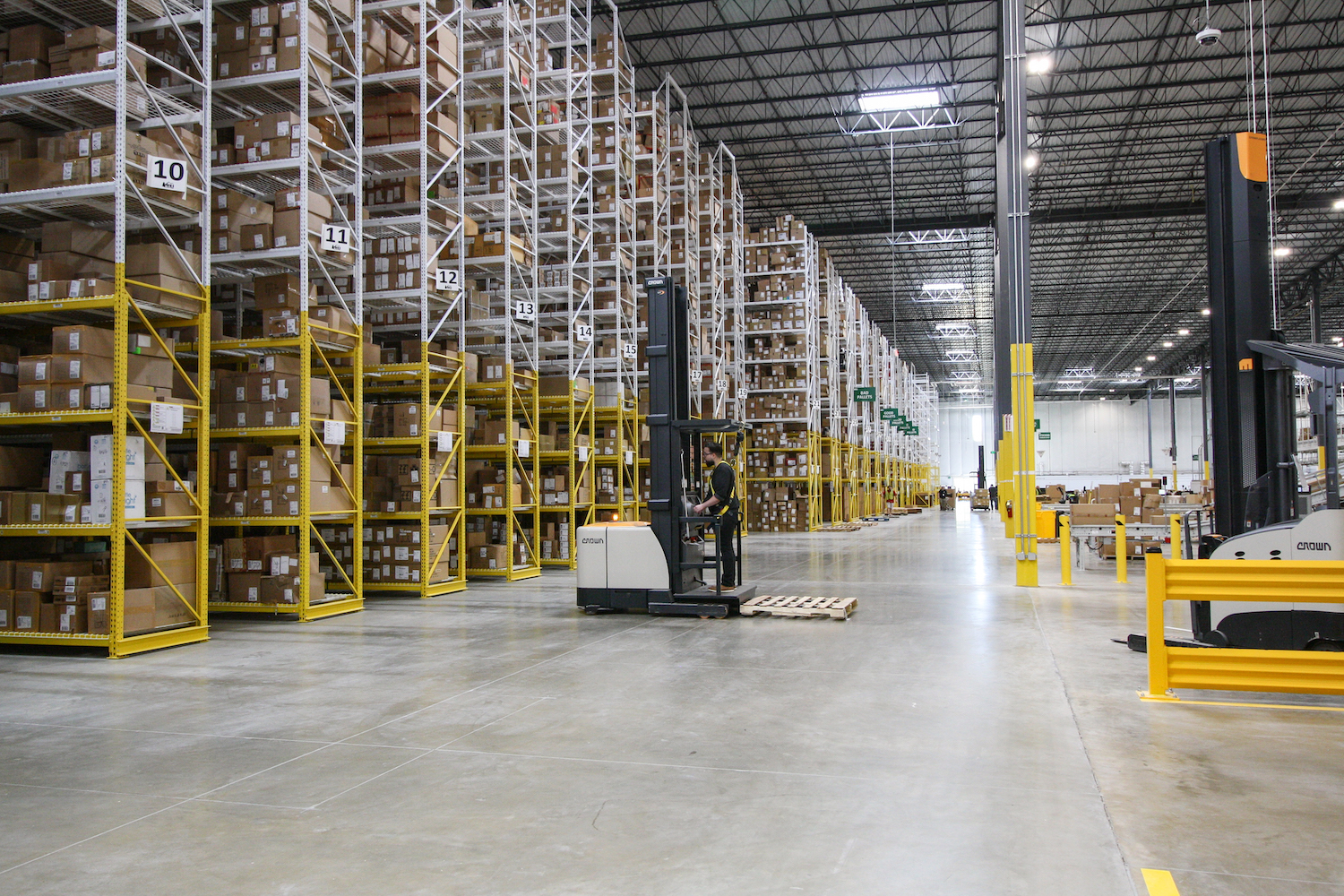
A walking and biking trail and habitat restoration are two projects currently in development on the campus to give employees more access to the outdoors. Covered bike racks encourage carbon-free commutes, and the showers and changing rooms in the employee gym make doing so a more comfortable experience for everyone. There are also six charging stations available for workers who own electric vehicles, Dempsey said.
Raising the bar for distribution centers
REI is not immune to the issues like layoffs and employee dissatisfaction that are prevalent across sectors like retail right now. But this new building design is raising the bar for both employee well-being and environmental responsibility at distribution centers.
Though many retailers may be relatively insulated from the effects of the climate crisis compared to brands that rely on outdoor activity for sales, like REI, eventually all bottom lines will be affected. It would be wise for more distributors to design their buildings to mitigate the climate crisis. Doing so while valuing employee well-being will pay dividends in tenure and productivity.